|
Marriage, Peace and Made Up Stories
In Abau., a Green River language of Papua New Guinea, "Liwak marowhway" is peace or literally "Liwak" (is to sit (not on ground) and "Marowhway" (peace, quietness), "Uron" is heart, "Uron-pi ko-ar yor is love and "Hakwe hne uron-pi ko nuw-wak" is I love you very much, "Hunkwe hane liy liwak o?" means can you marry me? and "uron-saw-ok" is a made up story and I wonder what sitting has to do with marriage and what the heart has to do with making up stories
0 Comments
Lucky Quiet Peace
In Achang, a language of China, Yunnan Province peace is "Nyenstap" (peace) where "Nyens Nyens" is in a peaceful, gentle manner, to be sedate, serene, to be sober, and calm "Samlo" is to keep silence so as to insure luck s in hunting, quiet, repose, to enter and be imbedded, to be still, and silent, "Samlo nyens nyens" is quietly, peacefully, to be at peace
Peace is Paix in French
As in "La guerre fait les larrons, la paix les pend." (War makes robbers, peace hangs them.), "Oy, voy, et te tay, si veux vivre en paix." (Hear, see, and say nothing if you would live in peace.)
French - "Paix" (peace), “tranquillité d'esprit” (peace of mind), "Bâton porte paix" (A stick is a peacemaker), "La guerre fait les larrons, la paix les pend." (War makes robbers, peace hangs them.", "Oy, voy, et te tay, si veux vivre en paix." (Hear, see, and say nothing if you would live in peace." France, Belgium, Canada, Caribbean, West Africa, Polynesia, etc.
Here are five video tours of Paris, France. No passport or language skills needed.
Paris Tour for 6th -9th Graders [Link].
Buildings and Art: Paris Catacombs Free Virtual Tour from Home [Link]
Buildings and Art: Eiffel Tour - Tour Eiffel
Buildings and Art: Paris' Sacre Coeur Church in Montmartre Neighborhood [Link]
Art - Petite Galerie [Link].
Palace of Versaille [Link]
Art: The Louvre [Link].
Places: Louvre's Metro Station
Places: Air France Museum[Link].
Mind Enjoys Peaceful Emerges In Kurtöp, a language of Bhutan "Dekit" means peace and prosperity linking the two words as synonyms a short part of the word "Kit" and "Kitpa" is peaceful "Jong-wa" means emerge combining for peaceful emerge or "Kitpa Jong-wa" translated happy "Sem ga-taki" also means happy, or literally mind enjoy
Kurtop: Kurtöp (xkz), Kurtop, Kurtöp, Kurtopkha, Kurtokha, Gurtü; Kürthöp; Kurteop, a vulnerable language―"Dekit" (peace, prosperity), "Dewa-ni-kipa" (bless, comfort), "Dewa" (peace, tranquility), "Kit" (peaceful), "Kitpa" (peaceful), "Jong-wa" (emerg), "Kitpa Jong-wa" (happy, lit. peaceful emerg), "Sem ga-taki" (happy, lit. mind enjoy), "Har-si" (feel happy)―Bhutan (Kurtö region in Bhutan, roughly the area of Lhüntse district in eastern Bhutan) Lhüntsi district, up to Tibetan border, west of Kurichu river).
Rongmei Peace on the Level Playing Field
In Rongmei Naga, a language of India "Maneic e" or "Maneicmei" is peace and plane or level "Kandih maneice" means the world is at peace while "Chaengphut maneic e" is the floor is plane or level as if a flat level floor rests at peace along with the people standing on it
Zeme: Rongmei (nbu), Rongmei Naga (nbu) ▲ Kabui, Maruongmai, Nruanghmei, Rongmai, Rongmei, a Zeme language—"Chuzaenghmei" (peace), "Nou-njanghmei" (peace), "Chuzaenghna" (peacefully), "Aniuchuzaenghna lungc bame" (we are living peacefully), "Maneic e" or "Maneicmei" (peace, plane, level), "Kandih maneice" (the world is at peace), "Chaengphut maneic e" (the floor is plane or level), "Masim e" or "Masimmei" (cool and calm), "Kata how masim e" (he is looked cool and calm)—India.
Excerpt from 25 Years of Peace with 10,000 Languages from Around the World by Kimberly Burnham https://amzn.to/3Q2W9D2
In Rongmei, a Zeme, Naga language, Galatians 5:22 Tiki Bumaengh tuang thai thu: nzianmei (love), neihlamei (joy), chuzaenghmei (peace), khaengvthaymei, zianthaymei, gaymei, lwmnuhmei, 23 lungh niamhmei, khatni kapumc sinriapmei hei e. Mi kumhmei ti hei nuh makmei Riakdanv maek ge.
Ora—"ǂxãĩ-b" (peace, to be peaceful), "!nó" (to be quiet), "!nō" (to be quiet, silent)—South Africa.
Aari (aiw)—"Laqmi" (peace)—Ethiopia. Abaluhya—"Omulembe" (peace) —Kenya. Abar or Mungbam—"Bìmje" (peaceful), "Bimbene" (peaceful)—Cameroon. Abau—"Liwak marowhway" (peace)—Papua New Guinea. Abaza—"Māmər" (peace)—Russia (Karachay-Cherkess Republic) and Turkey. Abellen, Ayta—"Tana" (peace)—Philippines. Abenaki (alg), Abnaki—"Olakamigenoka" (peace), "Okikiamgenoka", "Kamignokawôgan" (peace), "Wlakamigen" (peace)—Native American, Maine, USA, Montreal, Canada, North America. Abenaki: Penobscot Abenaki, Aln8ba8dwaw8gan (abe), Eastern Abenaki—"Wlakamigen" (peace), "Čik" (calm, quiet)—North America. Abkhaz (abk, ab), Abkhazian, Aбхазский, Abxazo, Abxaz, Abkhazian (abk), Apkhazian, Apkhaz, Aԥсуа бызшәа [aṗsua byzšwa], Aԥсшәа [aṗsšwa], Abkhaze, Abjaso, a vulnerable minority language in Europe—"Аҭынчра" [Aṭynčra] (peace)—Caucasus and Georgia (Abkhaz Republic), Turkey (diaspora communities in Turkey), Russian Federation, the Middle East and Western Europe; includes the Ashkharawa dialect officially subsumed under Abaza in the Russian Federation. Abui (abz)—"Pendamai" (peace), "Amon" (calm), "Moku" (calm), "Rama" (calm), "Dame" (peace)—Indonesia (East Nusa Tenggara, Greater Alor, and Timor-Alor-Pantar). Aceh, Achinese (ace), Acehnese—"Mayget" (peace), "Damien" (peace)—Aceh, Sumatra, Indonesia. Achaemenid Elamite (elx)—"Gu-gu" (peace), "Gugu" (peace)—Elamite Empire, Ancient Near East, Middle East. Achagua (aca), Achawa, Ajagua, Achugua, and Xagua—"Sáictaque'e" (peace), "Sáictacta" (peace)—Colombia (Eastern Colombia). Aché (guq)—Krɨ̃ba rõma (peace), "Kra gatu" (calm), "ɨ praru gatu" (calm (of the sea)—Paraguay. Achuar-shiwiar (acu)—"Angkan pengker nintimratin" (peace)—Peru. Adyghe (ady), Adygean, Adyghabze, адыгэбзэ, Adygei—"Rупсэху" (peace), "Rупсэф" (peace), "мамырныгъ" (peace)—North-west Caucasus Russia. Afar (aa)—"Salaamata" (peace)—Ethiopia, Eritrea, Djibouti. Afrikaans (afr)—"Vrede" (peace)—South Africa. Aghul (agx), Агульско-русский словарь, Aghul-ch'al, Agiul Shui. Autonym. агъул, Aġul, агъул чӀал , Ağul ҫ̇al,—"ислахІвел" [Islahwel] (peace), "Islakhivel" (peace), "Sakin" (calm), "секинвел" [Sekinwel"] (peace), "Sekinvel" (peace), "иджеф прил хороший" (good), "идже прил хороший" (good), "Idzhef" (good)—Russia. Aghul (Koshan dialect)— "авадушас" [Awadušas] (peace), "Avadushas" (peace), "Idzhed" (good) or "Sakin" (calm)—Southern Dagestan, Russia and Azerbaijan. Aguaruna—"Ag'kan" (peace), "Epegtuniajum" (peace), "Mijámu" (calm)—Peru (Marañon River area) Agutaynen (agn)—"Kaoyan" (goodness; well-being; peace)—Philippines. Ainu (mis)—"アプンノ [Apunno in Katakana] , あぷんの" [Apunno in Hiragana] (peace)—Japan. Äiwoo (nfl)—"Väkolooli" (make peace), "Meloo" (peaceful), "Wâmeloo" (make peace)—Reef-Santa Cruz Islands, Solomon Islands. Ajië, Bakla,Beki, Wai, and A’jie—"Ta" (peace)—New Caledonia, Oceania Ajja, Aja, or Ajagbe—"Fafá" (cold, peaceful, peace, shading), "Ŋcifafa" (peace), "Fɛɛ" (willingly, easily, peacefully),- Benin, a small country in Africa. Ajyininka Apurucayali—"Kamiitha" (peace)—Peru. Akan (ak)—"Asmomdwoe" (peace)—West Africa. Akawaio (ake)—Ereuta (peace), "Tʉusewankamai'" (peace), "Iꞌnɨꞌpanʉkʉ pɨꞌ teꞌsan (make peace)—Guyana (Mazaruni River), Venezuela (Bolivar State), Brazil (Roraima State). Akkadian (akk)—"Salmu" (peace)—Mesopotamia (extinct). Akoose (bss)—"Nsaŋ" (peace) or "Ne nsaŋ"—Cameroon Alabama (nai)—"Ittimokla" (peace), "Utimokla" (peace), "Innaaɬiilka" (peace), "Oolakano" (to be at peace, be friendly, be peaceful)—Native American, North America. Alamblak (amp)—"Duka mmokfot" (peace, hope, forget, lack of worry, think crazy)—East Sepik, Papua New Guinea. Albanian (sq)—"Paqe" (peace), "Páqja" (peace)—Albania, Kosovo, Macedonia. Albanian—"Paqe" (peace), "Páqja" (peace), "Pake" (peace)—Albania, Kosovo. Alekano, Gahuku (gah)—"Hulu" (peace), "Zou" (peace), "Alémo zou live" (silence, make quiet, make peaceful), "Lipizeko" (peaceful, patient, calm), —Papua New Guinea (Eastern Highlands Province). Algonquin (alg)—"Wâki Ijiwebis-I" (peace), Waki Qiwebis—North America (Canada Quebec). Alsatian (gsw)—"Fréda" (peace), "Friede" (peace)—France (Alsace), Switzerland. Alune (alp) —"Mise" (peace), "Mise kai lomai" (peace)—Indonesia. Amanab (amn), Amanab (Naineri)—"Afa sifakalig” (peace)—Papua New Guinea (Sandaun Province). Ambonese Malay—"Bakubae" (peace or damai), "Dame" (peace)—Ambon Island in the Maluku Islands of Indonesia. Amele (aey), Amale, Huar, Jagahala, Haija—"Malol" (peace), "Manin" (peace), "Tanaw-eʔ" (to make peace)—Madang, Papua New Guinea. Amharic (amh, am), Kuchumba, Amarinya, Amharinya, and Amarigna—"ሰላም" [salām] (peace), "Salam" (peace)—Ethopia, Egypt, Israel. Ampeeli (Safeyoka dialect)—"Sɨmeho" (peace)—Papua New Guinea. Ampeeli (Wojokeso dialect)—"Sɨmeho" (peace)—Papua New Guinea. Ampeeli, Safeyoka, Angan, Ampele, Ambari—"Sɨmeho" (peace)—Papua New Guinea. Angave (aak), Ankave—"Ayinɨ́ŋɨ́" (peaceful), "Maiwi" (peacefully, unconcerned, innocently, unaware, careless)—Papua New Guinea's Gulf Province. Anglo Saxon, Old English (ang)—"ᚠᚱᛁᚦ” [Friþ] (peace), “Frið" (peace)—England (extinct). Antillean Creole—"La Pé" (peace), "Lapé" (peace)—France (French Antilles) or Martinique. Arabe—"Sala ̄m" (peace)—Africa. Arabic: Arabic (arb)—"سلام [Salām, Salam] (peace), " صلاة من أجل السلام" (peace) “Salaam” (peace), Salam” (peace)—North Africa, Mideast, Central Asia, and liturgical, Maghreb, Near East. Arabic: Gulf Arabic—"Salaam" (peace) —United Arab Emirates (Dubai, Abu Dhabi, Sharjah), Qatar, Kuwait, Bahrain, Saudi Arabia, Iraq and Oman. Aragonese (an)—"Patz" (peace)—Spain. Aralle—"Kamasahkeang" (peace)—(Indonesian Tribal Language) Aramaic, Syriac, Assyrian (arc)—"ܫܠܡܐ [Shlamaa] (peace)—Iraq, Iran, Syria, and liturgical. Aranda (are), Langrev—"Urnere" (peace)—Lower Southern (Arunta) Australia. Aranés (oci), Aranese—"Patz" (peace), "La Patz" (peace)—Spain, Europe. Arapaho (arp), Hinónoʼeitíít—"Neneenii3o'oneihnoo" (I am behaving well, peacefully), "Teneiitooneiht" (calm, quiet, virgin)—Native American Arawak (arw-000), Araguaco, Arahuaco, Arahuacos, Arawac, Arowak, Arrowukas, Aruak, Aruaqui, Arwuak, Lokono, Lokono Dian (people's talk), Luccumi, an Amerind, Equatorial, Arawakan, Maipuran, Northern, Ta-Arawakan language—"Sare" (well, in Arawak the word well as in live well includes peace and harmony), "Sareken" (better), "Ymadianthi, Omadianthi, Madianthi" (n): companion, buddy, comrade. Sare b-a-li kaky-n b-omadianthi oma. “You must live well (in peace and harmony) with your companions/comrades.” Sare w-a-the ymadianthi oma kaky-n. “Let us live well (in peace and harmony) with our companions)—Suriname (Arawak is spoken by some hundred Arawak people in scattered locations across the north of Suriname), Guyana, Venezuela. Arawak is spoken by a tribe of indigenous peoples primarily located in the Caribbean and northern South America. Arbëresh, Arbyresh (sq)—"Pakjy" (peace), "Paqe" (peace)—Southern Italy. Arifama-Miniafia—"Tufuw" (peace)—Papua New Guinea Armenian (hye, hy) Arménien, Hayeren—"խաղաղություն" [Xaġaġut'yun, Xałałowt‘yown], “Khaghaghoutyoun” (peace), “Khanhaghutyun" (peace), "Khaghaghoutyoun", "Khaghaghutiun", "Ashkharh" (peace), "Han-gč̣im" (lie, rest), "Han-gist" (tranquility), Աղոթք խաղաղության (prayer for peace)—Armenia, Armenian Highlands, Iran, Turkey, Russia, and Azerbaijain. Arrernte, Eastern (aer)—"Mwarre" (peacable, good)—Alice Springs, Australia. Assamese (as)—" শান্তি [śānti] (peace), "Sānti", "Shanti", "Ȟ̇ānti", "Nti" or "Xanti" (peace)—India, Bangladesh, and Bhutan Assyrian (aij, aii), Neo Assyrian or Neo-Aramaic—"Šulmu" (welfare, safety, peace, prosperity)—Iran, North Iraq, Syria, Turkey. Armenia, and Israel. Assyro-Babylonian—"Šul-mu" (peace)—Ancient Semitic.language. Asturian: Asturian (ast)—"Paz" (peace)—Spain. Asturian: Bable (asf)—"Paz" (peace, peace of mind)—Spain: Princedom of Asturias and Portugal. Auhelawa—"Nuwadaumwali" (peace, calm heart, peaceful) or "Ebe"—Papua New Guinea. Avañe'ẽ Guarani, Guaraní Paraguayo—"Py’a guapy" (peace) or "Ɨvɨ-tuporeʔɨ̃" (calm)—Paraguay Avar (av)—"Рекъел" [Reqel] (peace)—Caucasus. Avestan (ae)—"Āxšti" (peace)—Iran (extinct). Avestan—"Axšti" (peace)—Iran (extinct) Ayautla Mazatec (vmy)—"Kjuaxiu" (peace)—Mexico, Mexican state of Oaxaca, in the town of San Bartolomé Ayautla. Aymara, Ajmara—"Hacaña" (peace), Qasiki (free; peaceful; tranquil)—Peru, Bolivia, Paraguay, Argentina, Uruguay, Chile, and Brazil. Ayta Abellen—"Tana" (peace)—Philippines Azeri (az), Azerbaijani (azj)—"Sülh" (peace, armistice, truce, amicable, orderly), صولح , "Salh", "Solh" (peace, armistice, truce, amicable, orderly), "Barış", "Архајынлыг", "динҹлик", "дүнја", "сакитлик", "Cүлһ" "Dünya", "Dinçlik" (peace), "Rahatlıq" (peace, calm, boon, quietude, cosiness, convenience, lull, quietness, quiescence, placidity, rest, quiet, comfort, serenity, repose, ease, facilitation, relief, amenity, facility, accommodation, improvement)—Azerbaijan, Russian, Daghestan, Iran, Afghanistan, Iraq, Syria and Turkey. Azeri, Azerbaijani (azj) Quote—"Şöhratparastlik qurtaran yerdan da əmin amanliq başlaylr." (Peace begins just where ambition ends.)—Azerbaijan, Russian, Daghestan, Iran, Afghanistan, Iraq, Syria, and Turkey. Azeri or Azerbaijani (azj) Quote—"Sülhü qoruyub saxlamaq onu qazanmaqdan daha asandır." (Better keep peace than make peace.)—Azerbaijan, Russian, Daghestan, Iran, Afghanistan, Iraq, Syria, and Turkey. Babylonian, a dialect of Akkadian—"šul-mu"—Ancient Semitic language. Balanese (ban) or Basa Bali—"Damé", "Shanti", "Swasti" or "Rahayu"—Bali. Balochi (bcc)—"Sala" (peace), "Aman" (peace), حیر/صلح or ایمنی "Muhnt" (a share of stolen property restored to the owner as a peace offering)—Iran and Pakistan. Bambam—"Kamasannangam penaba" (peace)—Indonesian Tribal Language. Bambara (bm)—"Here” (peace), “Hèrè” (peace), “Errébé" (peace)—Mali. Bangi (Bobangi) (bnt)—"NyiEe" (peace), "Nyiee" (peace)—Congo. Baoulé—"Ahoudjo hé" (peace), "Dyra koa!" (keep calm)—Ivory Coast, Cote d'Ivoire, West Africa. Barakhinei—"Pû" (peace)—a Conlang. Bargam, Mugil (mlp)—"Tamaz" (peace, good time, offering, sacrifice)—Madang Province, Papua New Guinea. Bari (bfa)—"Fá'rana" (peace) or "Liòngit" (peace) or Yukan (peace, rest)—South Sudan. (Africa). Basaa (bas)—"SàN" (peace), "Sàn" (peace), "Nsaŋ" (peace)—Cameroon. Bashkir (ba)—"тыныслыҡ" [Tïnïslïq] (peace), "татыулыҡ" [Tatıwlıq] (peace), "тыныс" [Tynys] (peace), "Tınıslıķ" (peace)—Volga, Urals, Central Asia. Basque (eu)—"Baké" (peace), "Bakea" (peace)—Spain, France. Batak (btk)—"Pardamean" (peace)—Indonesia. Bavarian (Bayrisch)—"Fridn" (peace)—Bavaria (Germany). Belarusian (bel, be), Byelorussian, беларуская—"мир" [Мір, Mir], Пакой [Pakoj] (peace) (peace), "спакой" [Spakój] (peace), "згода" [Zgoda] (peace)—Belarus. Bemba (bem, byi, bmy, bmb), Chibemba, IciBemba—"Mutende" (peace), "Mutenden" (peace), "Ukwikala mu" (peace), "Tondolo" (silently, calmly)—Northern Zambia, Zaïre, Congo-Kinshasha. Niger-Congo. Bena-bena, Benabena—"Fulu huseꞌna" (peace), "Fulunaꞌa" (peace), "Fulu hu'ehibe" (slow, unhurried, not in a rush, gentle, peaceful)—Papua New Guinea. Bengali, Bangla (bn)—"শান্তি" [śānti, Shanti] (peace) "Sānti", "Sainta", "Shanti", "Shaan-ti" (peace), "Abirōdha" or "Abirodha" (harmony, peace, accord, agreement, amity, friendliness)—Bangladesh and India (West Bengal, Tripura and Barak Valley). Berber—"Thalouith" (peace)—Algeria, Mali, Niger. Béti fang—Mvoay (peace) — Ivory Coast. Bhojpuri (bho)—"Shānti" (peace), "Sānti" (peace), "Sakoon" (peace)—India (Uttar Pradesh), Mauritius, Nepal. Bihari (bh)—" শান্তি" [Śānti]—Bangladesh and India. Biloxi (bil) and Ofo—Toke (calm) or "Tokerti" (calm, no breeze stirring)—United States (Mississippi Valley). Binisaya, Cebuano—"Kamingaw" (peace), "Pagdait" (peace)—Philippines. Bisaya (map)—"Kalinaw" (peace)—Brunei. Bislama (bis), Melanesian Pidgin English—"Natamata" (peace), "Pis" (peace, piece), "Temat" (peace)—Vanuatu, Melanasia. Blackfoot (bla), Siksiká—"Innaaissttiiya" (peace), "Innaihtsi'iyi" (peace)—Canada and United States. Bobo (nic)—"Makonakon" (peace)—Burkina Faso. Boko (nic)—"Lumana" (peace), Salama" (peace)—Benin, Nigeria. Bosnian (bs)—"Мир" [Mir] (peace), "Spokoj" (peace)—Bosnia and Herzegovina, Serbia, Montenegro, Kosovo. Brahui (dra)—"Âsûdaî" (peace)—Pakistan, Afghanistan, Iran. Breton, Brezhoneg—"Peoc'h" (peace), "Pèc'h" (peace)— France (Bretagne). Bribri (bzd)—Se̱ne bë̀rë (peace), Se̱rke bë̀rë (peace)—Costa Rica. Bugis—"Marennui mennang" (peace)—Indonesian Tribal Language. Bulgarian (bg)—"Мир" [Mir] (peace), “споко́йствие” [Spokójstvie] (peace) —Bulgaria, Turkey, Romania. Buli (nic)—"Goom-jigi" (peace)—Ghana. Bulu (bjl)—"Mvo'e" (peace), "évovoé" (calm, tranquil), "Ngbwa" (peace, friendship alliance, friendliness, kindness)—Cameroon and Niger-Congo; Africa. Burmese (my)—"င္ရိမ္းခ္ယေမ္းရေး" [Nrim-khyam-ye, Nyein Chan Yay] (peace), "Nyeinjanyei" (peace), "Ngrim:hkyam:re" (peace)—Myanmar Burushaski (bsk), Burū́šaskī Hunza—"Aram" (peace), "Saláamn" (peace), "Sukóonny" (peace) or "Manókuradj" (peaceful, generous, gentle)—Northern Gilgit-Baltistan, Pakistan. Cadhinor—"Peos" (peace) —a Conlang of Almea. Caglăll— "Pasc" [Pash] (peace), "Pasc" [paʃ] (peace)—Conlang by a Chilean programmer. Cajun French (Acadian, Kreyol Lwiziyen)—"Pé", "Lapé", "Trankil" (peaceful)—Louisiana (USA). Canis—"Йюρaςςåmmåж” [Joorahssommòhzje] (peace)—Conlang. Capeverdian Creole—"Paz" (peace), Pas (peace)—Cape Verde Islands. Caribe (car), Galibi—"Sara'me" (peace), "Panawa" (peace)—Venezuala, Suriname. Caribe—"Sara'me" (peace) or "Panawa" (peace)—Venezuala, Suriname. Carolinian (map)—"Gunnammwey" (peace)—Micronesia. Carolinian—"Gúnnammwey" (peace)—Micronesia. Catalán (cat, ca), Catalão, Català, Catalan-Valencian-Balear—"Pau" (peace), "Vèncer" (calm), "Calma" (calm), "Assossegat" (peaceful, motionless and calm; placid, easy, easygoing, leisurely, placid , quiet, smooth, still, tranquil, unruffled, not hurried or forced)—Catalonia, the Valencian Region, the Balearic Islands, the Franja (Fringe of Aragon), Andorra, France, Roussillon and Alghero (Sardinia). Catanese, Catanès—"Paci" (peace)—Conlang (Adarian of Canalia). Cayuga—"Odriyohsrędaˀǫh" (peace), "Ganig}h[yo" (peaceful)—Ontario, Canada. Cebuano (ceb)—"Kalinaw" (peace), Kahusayan" (peace)—Philippines. Cebuano—"Kalinaw", "Kahusayan" (peace)—Philippines (Central part). Central Atlas Tamazight—"Talwit" (peace)—North Africa. Central Tarahumara—"We kii'ri" (peace)—Mexico (Chihuahua).. Cerma—"Kufĩɛŋo" (peace), "Yaafɛ̃lle" (peace)—Burkina Faso. Chamorro (cha, ch)—"Minaggen" (peace) or "Pås" (peace) or "Påsifiku" (Pacific, peaceful, peaceful state, peace) or "Åplåka" (make peace)—Guam and the Northern Mariana Islands. Champenois (Aube – Marne – Haute-Marne)—"Tocque mornicault" (peace), "Calme" (calm, peace), "Paix" (peace)—France and Belgium. Chechen (ce)—"Машар" [Maşar, Mashar] (peace)—Chechnya (Caucasus), Russia (Chechen Republic) Cherokee, Tsalagi (chr)--"ᏙᎯᏱ" [dohiyi] (peace), "Dohiyi" (peace), "Nvwadóhiyada" (peace)—North America, USA (Oklahoma) Cheyenne (chy)—"Nanomonsetôtse" (peace), "He'kotâhestôtse" (peace)—USA (Montana, Oklahoma). Chichewa, Chewa, Nyanja (ny), Chi Nyanja —"M'tendere" (peace)—Malawi. Chicksaw (cic), Chickasaw (nai)--"Nanna Ayya" (peace)--Native American, North America (South Central Oklahoma) Chiluba, Luba (lbk)—"Ndowe" (peace)—Zaire or Dem. Rep. Congo. Chin, Zomi—"Nopsakna" (peace)—Myanmar and India. Chinese: Mandarin Chinese—"Hé píng" / 和平 (peace)—China. Chinese: Mandarin, Putonghua (zh)—"和平 [Hépíng, Heping" (peace)—China, Taiwan, Singapore. Chinese: Sichuan Yi (ii)—"ꄮꐽ" [Te-njo] (peace)—China. Chinese: Wu Chinese (wuu) y˦tɕiu˦ɦo˨ t‘a˨˩dialect (wuu-007) —"t‘a˨˩ bɦeŋ˩ ˨" (peace), tɕ‘yɛ˦˧ ko˦˧(make peace), "tɕaŋ˦˧dɦeŋ˩˩" (calm)—Jiangsu south of Changjiang River, east of Zhenjiang, on Chongming Island, mouth of the Changjiang, and north of the Changjiang in the area around Nantong, Haimen, Qidong, and Qingjiang; Zhejiang Province south to Quzhou, Jinhua, and Wenzhou. Also in United States. Chinese: Wu Chinese or Shanghainese—"Hhu bin" / 和平 (peace), "Hépíng" (peace) —Shanghai, China. Chinese: Yue, Cantonese or Jyutping —"Peng on" 和平 or "Peng an" (peace), Wo ping / 和平 (peace)—Canton (Guangdong), Macau, and Hong Kong, China. Chiquihuitlán Mazate (maq)—"Cjuajeya" (peace)—Mexico. Chishona/Manyika—"Rugare" (peace)—Africa. Choctaw (cho)—"Achukma" (peace), "Nuktanla" (peace), "Yukpa" (peaceable, peaceful), "Na yukpa" (joy, joyful man, pleasure, rejoicing, peace), "Achukma" (peace, good, well)—Native American language. Chokwe, Cokwe—"Ukulungunga" (peace)--Angola, Congo. Ch'ol, Tumbalá (cai)—"Ñʌch'chocoya" (peace), "ñʌch'tilels" (peace), "ñʌch'tʌlel lac pusic'al" (peace)—Chiapas (Mexico). Chontal, Tequistlatec (nai)—"Aylobaha Gafuleya" (peace)—Mexico. Choua—"Salam" (peace)—Africa. Chuang, Zhuang (zha, za), Vahcuengh, Northern Zhuang—"Bingzan" (peace), "Bingz" (level, even, flat, peace)—Guangxi, China. Chukchee—"Cumav" (peace) / "Цумав", "Унтэм" / "Untem", or "Amaravkėgyrgyn" / "Aмаравкэвагыргын"—Siberia. Chukchi (Chukot) (ckt, mis) —"Cumav" (peace), "Цумав" (peace), "Untem" (peace), "Amaravkėgyrgyn" (peace), "Амаравкэвагыргын" [Amaravkevagyrgyn] (peace)—Siberia. Church Slavonic: Old Church Slavonic (cu)—"Ми́ръ" [mírə] (peace)—Eastern Europe (liturgical). Chuuk (chk)—"Kunammwey" (peace)—Truk. Chuukese (chk)—"Kinamwe" (peace)—Micronesia. Chuvash (chv, Chuv, cv, chuv1255, CJU), Tchouvache, чувашский, Чӑвашла, Çăvaşla, Tënche, a vulnerable Altaic, Turkic, BolgarOghur language—"тӑнӑҫ" [Tănăş] (peace), "тӑнӑҫлӑх" [Tănăşlăh] (peace), "мир" [mir] (peace), "канӑҫлӑх" (peace)—Russia: near the Volga River. Cimbrian (Tzimbro, Tàuc') —"Bride", "Vride" (peace) —Trentino, Veneto (Italy). Cokwe—"Ukulungunga" (peace)—Africa. Comanche (nai)—"Tsumukikiatu" (peace)—North America. Comoran—"Amani" or "Salama"—Comoros, an archipelago in the Indian Ocean. Coptic (cop)—"Ϩιρηνη [Hirīnī]" (peace)—Egypt (extinct) and liturgical. Cornish (kw)—"Cres" (peace)—Cornwall (extinct). Corsican (co)—"Pace" (peace), "Paci" (peace)—Corsica (France), France (Corse), Italy (Sardiania). Corsican (North)—"Pace" (peace)—Corsica (France). Corsican (South)—"Paci" (peace)—Corsica (France).. Cree (cr)—"Wetaskiwin" (peace), Wîtaskîwin" (peace, truce, alliance), "Papayatik" (peace)—North America, Canada. Cree, Alberta Cree—"Peyahtikeyimowin" (peace, after the war)—Alberta, Canada. Cree: Plains Cree or Cree (Saulteau First Nation)—"Āstēkēsikāw" (the day is calm after the storm), "Ayiwāstin" (it is a calm day, the wind has died down), "Kāmwātapiwin" (The act of sitting quietly and not moving)—North America. Creole English: Gullah (Geechee) (cpe)—"Peace" (peace)—Georgia / Sourth Carolina sea islands (USA). Creole English: Jamaican Creole (Rasta, Jam Dung) (cpe)—"Satta" (peace)—Caribbean. Creole English: Port Moresby Creole (cpe)—"Gutpela taim" (peace)—Papua New Guinea. Creole French: Cajun French, Acadian, Kreyol Lwiziyen (frc, cpf)—"Pé" (peace), "Lapé" (peace), "Trankil" (peaceful), "Bon jour" (hello), "soleil" (sun)—Louisiana (USA). Creole French: Guadeloupe / Martinique Creole (cpf)—"Pé" (peace)—Caribbean. Creole: Port Moresby Creole—"Gutpela Taim" (peace)—Papua New Guinea. Cretan, Crétois—"Eiphnh" (peace), ειρήνη or "Irini"—Crete. Crimean Tatar (crh)—"Sulh" (peace), "Barışıq" (peace) or "Tınçlıq" (peace)—Crimea. Crio, Crioulo Creole or Portuguese Creole—"Pis" (peace)—Brazil. Croate, Croatian (hr)—"Mir" (peace rest repose) or "Svijet" (peace) or "Počinak" or "Sklad" or "Sloga" (peace)—Croatia, Bosnie-Herzégovine. Cuêzi, a Conlang—"Pēu" (peace, "Pu" (peace)—Conlang. Czech (cs) Čeština or Česky—"Pokoji" (peace), "Klid" (peace), "Mír" (peace)—Czech Republic. Dagara, Dàgáárè (dga)—"Maaro" (peace)—Ghana, Burkina Faso, Niger-Congo; Africa. Dakota (dak)—"Wóda khota" (peace time, time of truce) or "Míʾogdasʾisʾe" (calm and shining)—North America. Danish (da)—"Fred" (peace), "Friður" (peace), "Vrede" (angry)—Denmark, Germany (Southern Schleswig), Greenland, Faroe Islands. Dari (ira)—"صلح" [Sulh] (peace)—Afghanistan, Iran. Dari Persian, Afgan or Farsi—"Sulh" صلح "Ssulh" (peace), "Soola" (peace), "Sulha" (peace), صوله "Sola" (peace), "Sazi" (peacemaking) —Afghanistan, Iran, and Pakistan. Darja (ar)—"عسلامة" [Esslama] (peace)—Algeria. Darja—"Esslama" (peace)—Algeria. Dholuo—"Kue" (peace), “Kuo” (peace)— Kenya, Uganda, Tanzania. Dinka—"Ador" (peace), “Dɔɔr” (peace)—Sudan. Divehi—"Sulha" (peace)— Maldives. Divehi, Maldivian (dv)—"ސުޅަ " [Sulha] (peace)—Maldives. Dogrib (dgr) or Na-dene—"Ts'èwhı̨ ts'ı̨ı̨wǫǫ" (peace), "Nakenahohtsî" (make peace)—Canada: Northwest Territories. Dolenjsko —"Paks" (peace)—Conlang. Doolomitian —"Pese" (peace)—Con. Doriathrin—"Ēd" (feminine name, rest)—Constructed language conceived by Tolkien. Drow—"Gre'as'anto" (peace)—Con. Dschang or Yemba—"Mbw´né" (peace) —Cameroon. Dschang, Yemba (bai)—"Mbwɛ´né" (peace)—Cameroon. Duala - "Musango" (peace) - Cameroon. Duala (dua)—"Musango" (peace)—Cameroon. Dungan —"хәпин (həpin)" (peace)—China. Dutch (Flemish)—"Vrede" (peace), "Rust" (peace), "Peis" (peace, archaic), "vrede met zichzelf" (peace of mind) —Belgium. Dutch—"Vrede" (peace)", "Rust" (peace), "Peis" (peace, archaic), "Vrede met zichzelf" (peace of mind)—Netherlands, Belgium. Dutch—"Vrede" (peace), "Rust" (peace), "Peis" (peace, archaic), "vrede met zichzelf" (peace of mind) —Netherlands, Belgium. Dutch, Flemish (nl)—"Vrede" (peace)—Netherlands, Belgium, Suriname. Dzongkha (dz)—"གཞི་བདེ" [gzhi-bde] (peace)—Bhutan. Dzongkha—"Gzhi-bde" (peace)—Bhutan. Eastern Bolivian Guarani—"Yerovia" (peace)—Eastern Bolivia. Efik (efi)—"Emem" (peace)—Nigeria. Egyptian—"Hetep" (peace), "Em hotep nefer weret" (very great peace, hello)—Egypt. Ekari (ekg), Mee, Ekagi, Kapauku—"Muka-Muka" (peace), "Mukamuka tai" ( to be satisfied, to be happy or content, to make peace), "Kojaa" (slow, quiet, peaceful)—Indonesia. Elfdalian, Övdalian—"Frið" (peace)—Älvdalen Municipality (Övdaln) in Northern Dalarna in central Sweden. Emakhuwa—"Murettele" (peace), "Mwiwanana" (peace), "Amaani" (peace)—Mozambique. Emberá: Mʌ̃a Emberá—"Necai" (peace)—Colombia. Emberá: Northern Emberá or Embera del Norte—"Nekai" (peace), "Necai b̶ead̶ida", "Kĩrãipa" (peace), or "Paz" (peace)—Colombia, Panama. English (eng, en)—"Peace" (peace)—UK, Ireland, North America, Australia, New Zealand, Sub-Saharan Africa, Carribean, South Africa, etc. English: Middle English (enm)—"Pes, Pise, Pees" (peace)—England (extinct). Eskimo—"Erkigsnek" (peace)—Native American (Greenland). Esperanto ( eo)—"Paco" (peace)—Conlang, Constructed Language Estonian (et)—"Rahu" (peace)—Estonia. Ethiopian—”Selem” (peace)—Ethiopia. Etruscan (ett, mis)—"Pas" (peace) or "Pas fenvs a" (peace we bring to)—Italy (extinct). Éwé, Évé (ee), Gen, and Mina—"Ŋutifafa" (peace), "Fáfá" (peace)—West Africa. Ewondo—"Foè" (peace)—Cameroon. Extremaduran—"Pas" (peace)—Western Spain. Faeroese, Faroean, Faroese—"Fridur" (peace), "Friður" (peace)—Faroe Islands and Denmark. Fanagolo (crp)—"Kutula" (peace)—South Africa. Fang —"Mvoghé " (peace)— Gabon. Faroese, Faeroese (fo)—"Friður" (peace)—Faroe Islands, Denmark. Farsi, Persian—" ﺢﻟﺻ / Sohl" (peace), “Ashtee” حلص “Sohl”—Iran. Ferengi —"Kin" (peace)—Conlang. Fijian (fj)—"Vakaçegu" (peace)—Fiji. Finnish (fi)—"Rauha" (peace), “Hiljaisuus”, “Mielenrauha” (peace of mind), “Rauhanrukous”—Finland, Sweden, Russia. Flemish—"Påye" (peace), "Vreij" (peace), "Rust" (peace) or "Vrede" (peace)—Belgium. Fon (fon)—"Fifâ" (peace), “Fífá” —Benin Franco-Provençal —Pas (peace), "Patz" (peace)—France. French (fr), Français —"Paix" (peace)—France, Belgium (Wallonia), Canada (Quebec), Caribbean, West Africa, Polynesia, , Belgium , Switzerland (Romandie), Monaco, Luxembourg. French—"Paix" (peace), Tranquillité (peace of Mind)—France, Belgium, Canada, Caribbean, West Africa, Polynesia, etc. French: Old French (fro)—"Pais" (peace)—France. Friesch—"Fred" (peace), "Fretha", "Frethe", "Fretho", "Freda", "Grid" (peace)—Germany, Netherlands. Frisian (fy), Frysk (fry), Friesian sherland, Freese, Friesch—"Frede" (peace) or "Fred" (peace), "Frede fan 'e geast" (peace of mind), "Kalm) (calm), "Ienriedigens" (harmony, unanimity), "Fredich", "Freedsum" (peaceful), "freedsum" (peaceloving)—Frisian Islands in the North Sea, Germany, Netherlands Frisian, Northern (frr), a language of Germany, North Frisian dialects are grouped into two main divisions: mainland and insular. Insular dialects are Sylt Frisian (Söl'ring), Föhr-Amrum Frisian (Fering/Öömrang), Heligolandic Frisian (Halunder). Frisian: Western Frisian, Frysk, a language of Germany—"Frede" (peace), "Frederjochter" (Justice of the Peace), "Nobelpriis foar de Frede" (Nobel Peace Prize), "Fredich", "Freedsum", "Stil" (peaceful), "Rêst" (peacefulness)—Germany, Netherlands. Friulian, Frulan (fur)—"Pâs" (peace), "Pac" (peace)—Italy (Friuli) . Fula, Falani (ff)—"Jam" (peace)—Nigeria, Guinea, Mali, West Africa. Fulfulde: Fulfulde—"Jam", Jojja (reconcile, adjust), "Jojjiiji (peace, reconciliations, harmony), "Jojjindidira" (make peace between, meidate), or "Hoolnaare (safety, peace, state of peacefulness, confidence)—Mali. Fulfulde: Borgu Fulfulde (fue) or Borgu—"Jam"—Burkina Faso, Benin, Nigeria, Central-Eastern Niger spoken in Cameroon. Chad. Nigeria. Sudan. Fulfulde: Burkina Fulfulde, Burkina, Western Niger —"Jam" (peace)—Burkina Faso and Western Niger. Fulfulde: Maasina Fulfulde (ffm) or Maasinankoore Fulfulde or Maasina—"Jam"—Mali, Niger, Congo. Fulfulde: Pulaar Fulfulde or Pulaar—"Jam" (peace)—Burkina Faso, Nigeria, Central-Eastern Niger, Cameroon, Chad, and the Sudan. Fulfulde: Pulaar/Pular/Fulani) —Jam (peace)—West Africa. Ga—"Hejole " (peace)—Conlang. Gaelic Scottish, Scots Gaelic, Gàidhlig (gla)—"Sìth" (peace), "Saucht" (reconciled, at ease, in peace, tranquility)—Scotland. Gaelic-Irish—"Siochain" (peace), “Sith” (peace)—Ireland. Gafuleya Chontal—"Aylobaha" (peace)—Mexico. Galician, Gallegan (gl)—"Paz" (peace)—Spain (Galicia), Portugal. Ganda (lg), Lug, Ganda—"Mirembe" (peace)—Uganda, Niger, Congo. Garifuna (cai)—"Darangilaü" (peace)—Honduras, Belize. Gascon —"Patz" (peace)—Conlang. Ge'ez (gez)—"ሰላም [Salām, Salam] (peace)—Ethiopia, Eritrea (liturgical). Gen/Éwé/Mina—Dutifafa (peace), Ŋutifafa" (peace) —West Africa. Georgian (ka)—"მშვიდობა" [Mšvidoba] (peace), “სიმშვიდე / Simšvide” (peace), “მშვიდობა / mšvidoba”—Georgia. German: German (de)—"Friede" (peace), "Frieden" (peace), "Der Friede" (peace), “Ruhe” “Scheinfriede” (phoney, hollow)—Germany, Austria, Switzerland, Liechtenstein, Italy (South Tyrol), Belgium, Luxembourg. German: Alsatian, Alemannish (gem)—"Fréda" (peace)—France, Switzerland. German: Bavarian, Bayrisch (gem)—"Fridn" (peace)—Bavaria (Germany). German: Cimbrian, Tzimbro, Tàuc' (gem)—" Bride, Vride" (peace)—Trentino, Veneto (Italy). German: Kölsch (gem)—"Fridde" (peace)—Germany. German: Low German—“Freden”, “Freed”, “Fräden”, “Frääd” (peace) —Germany German: Mennonite Low German (gem)—"Fräd" (peace)—North/South America, Europe. German: Middle High German (gmh)—" Vride" (peace)—Central Europe (extinct). German: Old High German (goh)—"Fridu" (peace)—Central Europe (extinct). Giha—"Amahoro" (peace) -Western Tanzania. Gikuyu—“Thayu” (peace), “Ũhoro” (peace), “Horo” (peace)—Kenya. Glagolitic Script—"ⰿⰹⱃⱏ" [Mirŭ] (peace)—Eastern Europe. Gnomish—"Gwilm" (cessation, peace, peace, quiet, rest, quiet)—Constructed language conceived by Tolkien. Gothic (got)—"Gawairþi" (peace), “Friþu” (peace)—Central Europe (extinct), Eastern Europe, Italy, Gallia Aquitania, Gallia Narbonensis, Hispania, Crimea - Extinct Greek: Greek (el)—"Ειρήνη" [iríni] (peace), ησυχία (el) f (isychía), γαλήνη (el) f (galíni), ηρεμία (el) f (iremía), ειρήνη (el) f (eiríni)—Greece, Cyprus. Greek: Ancient Greek (grc)—"Εἰρήνη {eirḗnē]" (peace), "Eirini" (peace)—Mediterranean (extinct) and liturgical. Greek: Ancient—εἰρήνη (eiréne)—Ancient Greece Greek: Modern—"Iríni / ειρήνη / Eirēnē” (peace), “Irene” (peace), “Eiphnh” (peace)—Greece, Cyprus. Greenlandic, Kalaallisut (kl)—"Irqigsiniq" (peace), "Erĸigsineĸ" (peace), "Eqqissineq" (peace), “Eqqisaqatigiineq” (peace)—Greenland. Griko (el)—"Filìa" (peace)—Puglia (Italy). Guadeloupean Creole French (gcf)—"Pe" (peace), "Lapé" (peace), "Nofrap" (calm), "Ou pé komansé dékòlè" (you can start calm or you can calm down now)—Guadeloupe. Guahibo (guh, cai)—"Diosojavabelia, itsamonaejavabelia ata, barajamatabëcuenexanepanaeya vajataenexa" (peace)—Colombia, Venezuela. Guarani (gn)—"Apĭrĭvé, Ñerane'i, Py'aguapy" (peace), Aprvé, Ñerane'i, Py'aguapy, “Moñera'ÿ” (peace)—Bolivia, Paraguay, Brazil. Guiana Creole (Kreyol) (at)—"Lapè" (peace)—Caribbean. Gujarati (gu)—"શાંતિ [Śānti]" (peace), "Shanti" (peace), "Śānti", "Shāntatā" (peace, calm), શાંતિ—India, Pakistan. Gullah (Geechee) —"Peace" (peace)—Georgia / South Carolina Sea Islands (USA). Guyanian Creole—“La pé”—Guyana Gwich'in (gwi)—"Tsinehdan" (peace)—Alaska. Haida—Dláaya (is to be peaceful and calm)—North America (Canada: British Columbia; US: Alaska) Haiti Creole (Kreyol) (at), Haitian Creole (Kreyol)—"Lapè" (peace) —Caribbean. Haka—"Remnak" (peace) dai zirziar in um caan; e.g. A great calm followed the storm = Thlichia kha dai zirziar in a ummi caan nih a hun zulh (calm), a dai; e.g. A calm night = A daimi zan—Myanmar Hakka—和平 (fò-phìn)—China. Halaka—"Pegdub" (peace)-- Hangaza—"Amahoro" (peace)—Tanzania. Hausa (hua)—"Lafiya" (peace), Amana (peace), "Zaman lafiya" (peace), "Kwanciyar hankali" (peace), "Hakkure" (peace), "Lùmana" (peace), "Lùmaanàà" (peace), "Salamàà" (peace), "Sálámȁ" (peace), "Natsuwa" (peace)—Nigeria, Benin, Burkina Faso, Cameroon, Ghana, Niger, Nigeria, Sudan and Togo. Hawaiian (haw)—"Maluhia" (peace), "Maluhia" (peace), "Sipala" (peace), Malu (peace), “La’i” (peace)—Hawaii. Hebrew (heb)—"שלום" [Shalom] (peace), "שלווה \ שַׁלְוָה שלמא , Š(ə)lāmā—Israel and liturgical. Herero (her, hz), Otjiherero, Ovaherero, Helelo, a Bantu or Bantoid language—"Ohange" (peace), "Oveaotyohange" (those of the period of peace)—Niger-Congo, Namibia (Damaraland and Ovamboland), Botswana (Herero and Mbanderu peoples in Namibia and Botswana), Southern Africa, Africa. The Herero, also known as Ovaherero, are an ethnic group inhabiting parts of Southern Africa. The majority reside in Namibia. Hiligaynon, Ilongo (hil)—"Paghidait" (peace)—Philippines. Hindi (hi)—"शांति" [śānti] (peace), "Santi" (peace), “Shantih”, शांति “Śānti”, “Aman” (peace)—India, Nepal, Uganda, Suriname. Hiri Motu (ho)—"Taim billong sikan" (peace)—Papua New Guinea. Hmong (hmn)—"Kev tiaj tus" (peace), "Kev sib haum xeeb" (peace)—China, Vietnam, Laos, Thailand. Hmong: Green or Blue Miao dialect—"Thaaj yeeb" (peace)—China, Vietnam, Laos, Thailand. Hmong: White Hmong—"Thaj yeeb", "Kev sib haum zeeb" (peace)—China, Vietnam, Laos, Thailand. Hobyót, Hewbyót, Hobi, or Kalam Rif Weyheybyot—"ʔáfyət" (peace and good health)—Southern Arabia. Hokkien—“Taipeng” (peace)—China. Hopi (nai)—"Sipala" (peace), “Shinumu” (peaceful), “Paasikwa” (peace)—North America Huautla Mazatec (mau)—"Xi³ nchˀan¹ tjin" (peace)—Mexico. Hula—"Paghidaet" (peace) Hungarian (hu)—"Béke" (peace), “Békesség”, “Nyugalom”—Hungary, Romania, Slovakia. Icelandic: Icelandic (is)—"Friður" (peace), “Friðartími”, “Grið” (peace)—Iceland Icelandic: Old Icelandic (is)—"Friðr" (peace), "Fridr" (peace)—Iceland. Ido (io)—"Paco" (peace)—Nigeria. Igbo (Ibo, ig), Ibo (ig), Ogam—" Ùdo" (peace), "Udo" (peace), "Udho" (peace), "Ndokwa" (peace)—Nigeria. Ikinyarwanda—"Amahoro" (peace), "Salama" (peace)—Rwanda, Democratic Republic of Congo and Uganda. Ila (bnt)—"Chibanda" (peace)—Zambia. Ilocano (ilo)—"Kappia" (peace)—Philippines. Ilongot—“Paghidait” (peace) Inabaknon (abx)—"Kamurayaw" (peace)—Philippines. Indonesian, Bahasa Indonesia (id)—"Kedamaian" (peace), "Damai" (peace), "Perdamaian" (peace), "Ketentraman" (peace), “Ketenangan” (peace)—Indonesia. Ingush (inh)—"Машар" [Mashar] (peace)—Ingutia (Caucasus). Interlingua (ia)—"Pace" (peace)—Conlang, Constructed Language. Interlingue (ie)—"Pace" (peace)—Conlang. Inuit, Inuktitut (iu)—"ᓴᐃᒻᒪᓯᒪᓂᖅ" [Saimmasimaniq] (peace), “Tutkium” (peace), “Tutkiun” (peace), “Anusdake” (peace), “Eqkisgineq” (peace), "Saimmasimaniq" (peace), ᑐᑦᑭᐳᓐ (tutkiun)—Native American, Canada. Inupiak, Iñupiaq (ik)—“ᑭᖑᐃᖓᒃ" [Kiñoiñak], "Kiñuiñak" (peace), "Tutqiun" (peace)—Native American, North America, USA (Alaska). Irish (ga), Irish Gaelic—"Síocháin" (peace), “Síth” (peace), “Suaimhneas” (peace of mind)—Ireland Ishkashmi (ira)—"سلام" [Salām] (peace)—Central Asia. Ismaîn—“Pe” (peace) -- Italian (it)—"Pace" (peace)—Italy, Switzerland, San Marino. Itelmen, Itelmenic —ткарвэл (tkarvel)-- Ivatan (phi)—"Saychid" (peace)—Philippines. Jamaican Creole English, Jamiekan, Jamaican Creole, Rasta, Jam Dung—"Sata" (to tell an individual or group to relax; be at at peace or state of rest), "Satta" (peace) or ":Liv gud wid piipl" (peace)—Jamaica. Japanese (jap, ja)—"平和 " [Heiwa] (peace), 平和 (へいわ, Heiwa”, 平静 (ja) (へいせい, heisei), 平安 (ja) (へいあん, heian)—Japan Jarawara (jaa)—"Bara" (live in peace)—Brazil. Jatibonicu Taino (cai)—"Amikekia" (peace)—Puerto Rico. Jatvingian, Sudovian—"Sanpak", "Pak" (peace)—Baltic (extinct). Javanese (jv)—"Rukun" (peace), “Tentram” (peace), “Rahayuning gesang”—Indonesia. Jawa-Suriname— "Tentrem" (peace)—Indonesian Tribal Language. Jerma (Niger)—“Baani” (peace) Joola (Senegal)—“Ku sumay” (peace) Judeo: Judeo Persian (jpr), Judaeo-Persian, Bukharic, זאַבּאָניִ יאַהוּדיִהאָייִ בּוּכאָריִ [Zaboni yahudihoyi buxori] (bhh), בּוּכאָריִ [Buxori] (bhh), a Southwestern Iranian language—"Salum" (peace)—Mideast, Central Asia. Judeo: Judeo-Arabic (jrb), Arabi, Judéo-arabe, יהודית ערבית, a Semtic language—"Shlama" (peace) "Madi:nat as-sala:m" (the Town of Peace (Jerusalem) instead of "Yeru:šalayim" or "רושלים" in Hebrew (The translator glosses ירוּשָׁלִָ֑ם (“Jerusalem”) as דַאר אַלסְלַם (dār al-salām, “the house of peace”), using a defective spelling (possibly, al-salam)—Middle East, North Africa dialects. Judeo-Arabic are Arabic dialects spoken by Jewish communities in the Arab world. Judeo: Judeo-Arabic—Shlama—Middle East, North Africa Judeo: Judeo-Italian, Italkian or Bagitto—"Pača" (peace)—Italy. Judeo: Judeo-Persian, Bukharic—"Salum"—Mideast, Central Asia. Judeo: Ladino, Judeo-Spanish (lad)—"פאש" [Pas] (peace)—Turkey, Israel, North Africa. Kabardian—"Māmərəġă" (мамырыгъэ) (peace) or "Māmər" (мамыр) (peaceful)—Northwest Caucasian and the Eurasia Russia's Kabardino-Balkaria. Kabyle (kab), Kabylian—"Lahna" (peace), “Laafya”, “Asrad”, “Afra” (tranquility)—Algeria (Kabylie). Kala Lagaw Ya—"Paaudh" (peace), "Paaudha" (peace)—Western and Central Torres Strait Islands between Papua New Guinea and the mainland of Australian. Kannada (kn)—"ಶಾಂತಿ" [Shaamti] (peace), ಶಾಂತಿ / Śānti—India. Kanuri (knc-000, kr), a Saharan language—"Hêr" (the peace), "Kelafia" (peace)—Niger, Nigeria. Karelian (fiu)—"Rauhu" (peace), Vienosti" (peace)—Russia, Finland. Karen—“Emo tashi” (peace)—Burma Karo—"Kemalemen ate" (peace)—Indonesian Tribal Language. Kashmiri (ks)—"امن" [Amn] (peace)—Kashmir (India, Pakistan). Kashubian—"Mir" (peace)-- Kazakh (kk)—"Бейбітшілік" [Beybitšilik], [bEjbetSilik] (peace), “Beybiychiyliyk” (peace), “Mir” (peace), “Tınıştıq” (peace)—Kazakhstan. Kekchi (myn)—"Tuktuquil usilal" (peace)—Guatemala, Belize. Khmer (km), Kampuchea—"សន្តិភាព" [Santiphap, San Tepheap] (peace), “Santekphep”, “Sontépheab”, សន្តិភាព (san tepheap), ក្រសាន / Krɑsaan, ធ្យាន / Tyien (peace of mind), សន្តិភាព / Sondtipeeup, សន្តិកាល Sɑnteʔ kaal, “Soksang”—Cambodia, Thailand, Vietnam Kiche—"Utzil" (peace, blessing, goodness)—Guatemala (Momostenango (as well as its dependent Aldeas of Canquixaja, Nimsitu, and Panca) and Totonicapan (and its dependent Aldeas of Nimasak and Cerro de Oro). Kikongo—"Kikœndi" (peace), "Luvuvamu" (peace), "Ngêmba" (peace)—Democratic Republic Of The Congo, The Republic Of The Congo, Angola. Kikuyu, Gikuyu (ki)—"Thayu" (peace), “Thayũ” (peace), “Ũhoro” (peace)—Kenya. Kildi Sami—"Ajjv" (peace), мырр / “Myrr” —Russian Arctic. Kim Mun (mji) or Kjimmun—"Kwan ʔpjaŋ" 和平 (peace)—Yanyuan, Qiongzhong County, Hainan, China. Kimbundu—“Kutululuka” (peace) —Angola. Kinyarwanda, Rwanda, Ruanda (rw), Kirundi—"Amahoro" (peace), "Nimuhóre"—Rwanda, Democratic Republic of Congo, Uganda. Kirghiz, Kyrgyz (ky)—"Тынчтык" [Tınçtık] (peace)—Kirghizstan, China. Kirundi (Burundi)—"Amahoro" (peace)—Burundi and Rwanda Klingon—“Roj” (peace)—Conlang of Star Trek. Koasati, Coushatta (nai)—"Ilifayka" (peace)—North America. Kölsch—"Fridde" (peace)—Germany. Komi (kpv-001, kv)—"Söglasön olöm" (peace), "Soglasonolom" (peace), "Mir̃" (peace), "Lönʸ" (calm (of the sea), "Lony" (calm), "Yри" or "Мир" (peace) —Russian Arctic. Kongo (kg)—"Kikœndi" (peace), “Ngemba” (peace)—Congo. Konkani—“Soukāsāi” (peace), “Shanti” शंति (peace)—India. Korean (kor, ko)—"평화 " [Pyonghwa] (peace), "P'yŏng-hwa " (peace), 평화를 위한 기도, 평안 / Pyeong-an, 平安 , Pyeongjeong (peace of mind)—Korea Koryak—“Aмкавың”, “Amkavyng”, “мир”, “Mir”-- Kosraean (kos)—"Mihs" (peace)—Micronesia. Kreol—"Pé" (peace)—Africa. Kurdish (ku)—"Hasîtî" (peace), "Һашити" [Hasiti], "ھاسیتی" [Hasītī] (peace), "Asti" (peace)—Kurdistan (Turkey, Syria, Iran, Iraq). Kwamera (tnk)—"Pis" (peaceful, calm), "Nəmərinuyen" (peace), "Nəmərinuien" (peace), "əmərinu" (peace)—Tanna, Vanuatu. Kwanyama, Kuanyama (kua, kj), Oshikwanyama (kua)—"Ombili" (peace)—Angola, Namibia. Ladin (roa)—"Pêš" (peace), "Pêsc" (peace)—Trentino-Alto Adige (Italy). Laizo/Falam—"ramnak; daihnak, " (peace), "a reh mi; dai khip khep mi; a thing mi, a ngawi mi" (calm)—Myanmar and India. Lakalai or Nakanai—"Telela" (peace)—New Britain, Papua New Guinea. Lakota, Dakota (sio)—" Wolakota" (peace)—North America. Lango (lij), Langi, Leb Lango, Leb Lano, Leb Laŋo, Leb-Lango, Lëblaŋo, Lwo, Lwoo—"Kuc" (peace) "Kuch" (to be quiet, to be at peace), "Kweo" (to make cool, to pacify), "Ayom" (soft, peaceful), "Morembe Ayom" (good greeting), "Buti Ayom" (sleep softly, well)—a Southern Luo dialect spoken by the Lango people of Uganda and the Sudan. Lao (lo)—"ສມຕິພາປ" [Santiphap] (peace)—Laos, Thailand. Lari—"Dzûnu" (peace)—Republic Of The Congo Latin (la)—"Pax" (peace), "Pax Sit" (let peace be)—Rome (extinct) and liturgical. Latvian (lv)—"Miers" (peace)—Latvia. Lenakel—"Pis" (peaceful, calm), "Nəməlinuan" (peace) or "əməlinu" (peace)—Tanna, Vanuatu. Lenape, Delaware (del)—"Achwangundowagan" (peace)—North America. Ligurian (roa)—"Paxe" (peace)—Italy (Liguria). Limburgan, Limburgish (li)—"Vreij" (peace)—Belgium. Lingala (ln)—"Kímía" [Kimia] (peace), “Bobóto" (peace)—Congo, Democratic Republic Of The Congo, Republic Of The Congo, Angola, Central African Republic Lingua Franca (crp)—"Pace" (peace)—Europe, North Africa, Middle East (extinct). Lithuanian (lt)—"Taika" (peace)—Lithuania. Lojban (art)—"Panpi" (peace)—Conlang. Lombard (roa)—"Pas" (peace)—Lombardy, Piedmont, Trentino (Italy); Ticino (Switzerland). Louisiana Creole French (lou) (Bayou Teche)—"Pe" (peace)—Louisiana. Louisiana Creole French (lou) (Côté Allemand Creole)—"Lape" (peace)—Louisiana. Louisiana Creole French (lou) (Pointe Coupee Parish)—"Pe" (peace), "Lape" (peace)—Louisiana. Louisiana Creole French (lou) (Saint Tammany)—"Pè" (peace). "Trankil" (peaceful)—Louisiana. Louisiana Creole French (lou)—"Pe" (peace), "Lape" (peace), "Pè" (peace), "Trankil" (peaceful)—Louisiana. Low Saxon—"Vre(D)E" (peace)—Germany (Northern Germany), Netherlands Lozi (loz)—"Nala" (peace)—Zambia. Luba-Katanga (lu), Kiluba—"Ndoe" (peace)—Niger, Congo. Luganda (afa)—"Emirembe" (peace)—Uganda. Lugbara or Mugandat—"Asindriza" (peace (literally beautiful heart or nice heart), "Angu ndriza" (peace), "Asianzu" (peace, mercy)—Uganda and in the adjoining area of the Democratic Republic of the Congo. Luxemburgish, Lëtzebuergesch (lb), Luxembourgish—"Fridd" (peace), "Fridden" (peace)—Luxembourg. Màaya Yucateco (yua)—"Ets'a'an óolal" (peace, tranquility), "Jéedzel óolal" (peace), "Kinsik" (calm)—Mexico and Belize. Macedonian (mk)—"Мир" [Mir] (peace)—Macedonia. Maghrebi—"Salam" (peace)—Africa. Magindanoan (phi)—"Kali lintad" (peace)—Philippines. Malagasy, Malgache (mg)—"Fandriampahalemana" (peace)—Madagascar. Malay (ms), Bahasa Malaysia—"Keamanan" (peace), "Damai" (peace), "Daman" (peace)—Malaysia and Indonesia, Brunei, Singapore. Malayalam (ml)—"സമാധാനം" [Samaadhaanam] (peace)—India (Kerala). Malgache, Malagasy, Maalgasy, Masikoro—"Adana" (peace, slow, peaceful, tranquil; grave and prudent in action), "Fandriampahalemana" (peace), "Salama" (peace), "Mahasalama" or "Fahasambarana" (peace, tranquillity, blessedness), or "Fiadanam-po" (peace)—Madagascar East Africa. Maltese (mt)—"Paċi" (peace), "Sliem" (peace)—Malta. Manding (Mandenkan) —"Kayiroo" (peace)—Africa. Mandinka (man)—"Kayiroo" (peace)—Senegal, Gambia, Guinea-Bissau. Manobo (mno)—"Linew" (peace)—Philippines. Manx (gv)—"Shee" (peace)—Isle of Man. Maori (mi)—"Rangima'arie" (peace), Nohopuku" (peace), Rongo" (peace)—New Zealand. Mapundungun (arn)—"Uvchin" "Tügkülen" (peace)—Chile. Maranao (phi)—"Diakatra" (peace)—Philippines. Marathi (mr)—"शांतता" [Śāntātā] (peace), "शांती" [Śāntī] (peace)—India. Marquesan (map), Marquesas, an Austric, Austronesian, Malayo-Polynesian, Central-Eastern, Eastern, Oceanic, Remote, Central (A:M:C:E:O:C:R:C:E:P:N:E:C:Marquesic) language—"Hau" (peace), "Menino" (calm, without wind, silence (calm sur mer et sur terre; silence), "Manino" (calm, slow (calme; lente, lentement), "Merie" (serene, fine), "Meʔie" (calm, serene), "Hau tree" (Paritium tiliaceum), "ʻĀinahau" (land of the hau tree), "Hakavaʔe" (flatter, appaiser, calmer, caresser; caresse, flatterie)—Marquesas Islands, French Polynesia. The Marquesas Islands are a group of volcanic islands in French Polynesia, an overseas collectivity of France in the southern Pacific Ocean. The Marquesas are located at 9.7812° S, 139.0817° W. The highest point is the peak of Mount Oave on Ua Pou island at 1,230 m above sea level. Marshallese (mh)—"Ainemon" (peace)—Marshall Islands. Masaba, Lumasaba (bnt)—"Koosi" (peace)—Uganda. Masai, Maasi—"Eseriani" (peace)—Kenya and Tanzania. Matu—" rhoeprhoi nah, ngaimongnah" (peace), dingcicak, dingrak, hlangihsap tue. (calm)—Myanmar and India. Mawu (afa)—"Hálá" (peace)—West Africa. Mayangna, Sumu (sai)—"Prî Lâni" (peace)—Nicaragua. Mazatec: Jalapa De Díaz Mazatec (maj)—"Kju̱a̱jyu" (peace)—Mexico. Mažtane—"Pén"—a Conlang of Verdurian. Mele, Mele-Fila (mxe)—"word" (peace)—Atara mere, Vanuatu. Micmac (mic)—"Wôntôkóde" (peace)—North America. Mingo, Unyææshæötká' (iro)—"Skn'" (peace)—North America. Miskito (cai)—"Kupia Kumi Laka" (peace)—Nicaragua. Mohican, Mahican, Mohegan (alg)—"Anachemowegan" (peace)—North America. Mokilese (map)—"Onpek" (peace)—Micronesia. Moldavian, Moldavan (mo)—"Паче" [Pace] (peace)—Moldava. Mongolian (mn)—"Энх тайван" [Ènx tajvan] (peace)—Mongolia. Mongo-Nkundu (lol)—"Bóoto" (peace)—Congo. Moré—"Bâanem" (peace)—Burkina Faso Mossi, Moré (mos)—"Lâfí" (peace)—Burkina Faso. Muskogee, Creek (mus)—"Ittimokla" (peace)—North America. Na’vi (Avatar)—"Fpomtokx" (peace) or "Aylrrtok" (peace), "Fpom" (peace)—a Constructed Language or Conlang of the people of Pandora. Náhuatl, Aztec (nah)—"Tlamatcanemiliztli" (peace), "Mocehuia" (peace)—Mexico, Guatemala. Nauruan (na)—"Iow" (peace)—Nauru. Navajo, Navaho (nv)—"K'é" (peace), "Hozo" (peace)—North America. Ndebele: North Ndebele—"Ukuthula" (peace)—Zimbabwe, Botswana and South Africa. Ndebele: South Ndebele (nr)—"Ukuthula" (peace)—Zimbabwe, Botswana and South Africa. Ndonga, Oshivambo, Oshiwambo, OshiNdonga, Ndonga (Ndo, ng)—"Ombili" (peace), "Eindilo omolwombili" (peace)—Angola, Namibia. Nepali (ne)—"शान्ति" [Shanti] (peace)—Nepal. Netwar or Lenakel—"Pis" (peace)—Western Tanna, Vanuatu. Nez Perce (nez / nai)—"'Eyewi" or "‘Eʔyewi" (peace)—Native American, United States. Nganasan (mis)—"Cütü" (peace)—Siberia. Nhengatu (yrl, sai)—"Tecócatú" (peace)—Indigenous language of Brazil. Noldorin—"Sîdh" (peace), "Sēde" (peace), "Ídh" (rest)—Constructed language conceived by Tolkien. Norse: Old Norse (non), an extinct language—"ᚠᚱᛁᚦᚱ" [Friðr] (peace)—Scandinavia (extinct) North Tanna (tnn)—"Pis" (peaceful, calm), "Nəməlinuən" (peace) or "əməlinu" (peace)—Tanna, Vanuatu. Norwegian: Bokmål (nob), Standard Written Norwegian—Fred (peace), "Stillhet" (peace, tranquility, calm), "Ro i sinnet" (peace), "Fredelig" (calm)—Norway. Norwegian: Bokmål, Norwegian (nob), Standard Written Norwegian—Fred (peace), "Stillhet" (peace, tranquility, calm), "Ro i sinnet" (peace), "Fredelig" (calm)—Norway. Norwegian: Norwegian (no)—"Fred" (peace)—Norway Ntomba (bnt)—"Nye" (peace)—Congo. Nyanja, Chewa, Chichewa, or Chinyanja—"M’tendere", "Mtendere" (peace), "Tendele" (peace), "Lonjezana" (be at peace) or "Bata" (calm)—Southern African, Tanzania, and Malawi. Occitan, Provençal, Languedocian (oc)—"Patz" (peace, "Pas" (peace), "Sarra" (peace)—France, Spain, Italy, Monaco. Ojibwa, Chippewa (oj)—"Bangan" (peace), "Bisaniwewin" (peace)—North America, Canada (Quebec, Ontario, Manitoba), USA (Michigan, Wisconsin, Minnesota) Olkola (aus)—"Erray" (peace)—Australia. Oluta (cai)—"Maxu" (peace)—Nicaragua. Onandaga (iro)—"Chkenon" (peace)—North America. Oriya (ori-000, or), Orija—"ଶାନ୍ତି" [Šānti] (peace)—India. Oromo (om)—"ነገየ" [Nagaya] (peace)—Ethiopia, Kenya. Oshikwanyama—"Onbili" (peace)—Africa. Ossetian: Ossetian (oss-000, os), Ossetic (Osset.), Ossetisch, Ossete, Ossète, Osético, ирон, ирон æвзаг, осетинский (in cyrilic) Ossetic, Digor, Iron, a Scythian language—"æнцад дуг" [Aentsaddug] (peace), ӕнцад [äncad] (heart), "Fidyd" фидыд (peace), "Fidyddzinad" фидыддзинад (peace), "Sabyrdzinad" сабырдзинад (peace), "Sabyr" (calm), "фарн" (peace), "дуне" (peace, world), сабыр (calm (of sea), сабырдзинад (peace, hush, silence), "æncad" (quiet, tranquil, quietly) from "Ham-čyāta" and related to the Armenian root "Hang" (breath, rest), "Hang-e-aw" (to rest), "Hangst-ean" (rest, peace, resting place, grave), "æncad" (quiet, tranquil, quietly) from "Ham-čyāta" and related to the Armenian root "Hang" (breath, rest), "Hang-e-aw" (to rest), "Hangst-ean" (rest, peace, resting place, grave), "Anc̣ayun" (rest), "Sogd. š't `gleeful '; (from the Indo-European root "kʷei̯ǝ-, kʷii̯ē- (*kʷeḫü-es) Note: common Proto Germanic -u- > -ü-, -y-, -i-." (to rest quietly, quiet, peaceful)—Russia (North Ossetia-Alania), Georgia (South Ossetia), Iran, Georgia, Russian Federation. Ossetic is an East Iranian language spoken in Ossetia which is located partly in Russia and Georgia. Ossetian. Ossriandric—"Eord" (feminine name. rest)—Constructed language conceived by Tolkien. Otomi (oto)—"Hmetho" (peace)—Mexico. Ottawa, Odawa (oj)—"Nwebin" (peace)—North America. Palauan (pau)—"Búdech" (peace)—Palau. Pali (pi)—"Sāma, Santi" (peace)—India. Pampangan, Kapampangan (pam)—"Kapayapan" (peace)—Philippines. Pangasinan (pag)—"Kareenan" (peace)—Philippines. Panjabi, Punjab (pa)—"ਸ਼ਾਂਤੀ" [Śānti] (peace)—Pakistan, India. Papago-Pima (nai)—"Dodolimdag" (peace)—North America. Papiamentu (pap), Papiamento—"Pas" (peace)—Netherlands Antilles, Aruba, Bonaire, Curaçao. Pashto (ps)—"صوله" [Sola] (peace)—Afghanistan, Iran, Pakistan. Patois de la forêt de Clairvaux—"Pai" (peace)—France. Paumarí (sai)—"Va'i jaha" (peace)—Brazil. Persian, Farsi (fa)—"صلح" [solh] (peace)—Iran, Iraq, Afghanistan, Pakistan, Azerbaijan. Piedmontese (roa)—"Pás" (peace)—Piedmont (Italy). Pintupi-Luritja (aus)—"Yatanpa" (peace)—Australia. Polish (pl)—"Pokój" (peace)—Poland, Lithuania, Belarus, Ukraine, Czech Republic, Slovakia. Ponapean (map)—"Melelilei" (peace)—Micronesia. Portuguese (pt), Português —"Paz" (peace)—Portugal, Brazil, Angola, Mozambique, Cape Verde, Guinea-Bissau, São Tomé And Príncipe. Potawatomi (alg)—"E'tokmite'k" (peace)—North America. Powhatan (alg)—"Cohqwaivwh" (peace)—North America Prussian: Old Prussian (bat)—"Pakajan" (peace)—Baltic (extinct). Quechua - Bolivian Aymara Quechua—"Hacaña" (peace), "Sumañkañataki" (peace), "Suma" (delicious, good, savoury, tasty)—Bolivia. Quechua (qu)—"Anka Kay" (peace), "Qasikay" (peace), "Aligu" (peace), "Sonqo Tiaykuy" (peace)—Peru. Raeto-Romance, Romansch ( rm)—"Pasch" (peace)—Switzerland. Rakash—"Rawr" (peace)—Conlang. Rapanui (rap)—" Kiba-kiba" (peace), "Pava" (peace)—Chile. Romagnolo , Emiliano (roa)—"Pès" (peace), "Pas" (peace), "Pèsa" (peace)—Emilia-Romagna, Lombardy (Italy), San Marino. Romani—"Patcha" (peace)—Romania, Europe Romanian (ro)—"Pace" (peace)—Romania, Hungary, Moldova, Serbia, Ukraine. Romansh—"Pasch" (peace)—Switzerland (Grisons) Romany, Gypsy, Tsigane (rom)—"Smirom" (peace)—Europe, South America, etc. Rotuman (map)—"Huag Totoka" (peace)—Fiji. Roviana (map)—"Magogoso" (peace)—Solomon Islands. Rundi, Kirundi, Urundi (rn)—"Amahoro" (peace)—Burundi. Russian (ru)—"Мир" [Mir] (peace)—Russia, Belarus, Estonia, Latvia, Lithuania, Ukraine, Moldova, Armenia, Azerbaijan, Georgia, Central Asia. Russian: Cyrillic Russian—"мир" / "Mir" (peace), "спокојство", "спокој" (peace of mind), "миръ", "mirŭ" (peace)—Russia and Eastern Europe and Asia. Sa'a (map)—"Däilama" (peace)—Solomon Islands. Saint Lucian Creole (Kweýol̀) French (acf)—"Lapé" (peace, quiet, calm, stillness, silence) or "Milyé" (peace, truce, cessation of fighting) or "Wipo" (rest) or "Bay wipo" (to leave in peace, to leave alone)—Carribean. Sami: Kildi Sami (se)—"А̄ййв" [Ājjv] (peace)—Russian Arctic. Sami: Northern Sami (se)—"Ráfi" (peace)—Norway, Sweden, Finland, Russia. Samoan (sm)—"Filemū" (peace), "To'a" (peace)—Samoa. San Jerónimo Tecóatl Mazatec (maa), Tecóatl Mazatec, Eloxochitlán Mazatec, Northern Highland Mazatec—"'Nchán" (peace)—San Jerónimo, Mexico. Sängö, Sango (sg)—”Siriri” (peace), “Sôngô " (peace)—Central African Republic. Sanskrit (sa)—"शान्तिः" [Śāntiḥ, Śānti] (peace)—India (extinct, liturgical). Sara—" ‘Godo" (peace)—Africa. Sardinian: Barbaricino (sc)—"Pache" (peace)—Italy (Sardinia). Sardinian: Campidanese (sc)—"Paxi" (peace)—Italy (Sardinia). Sardinian: Logudurese (sc)—"Paghe" (peace)—Italy (Sardinia). Saxon: Old Saxon (nds)—"Friðu" (peace)—Saxony (extinct). Scots (sco)—"Pace" (peace)—Scotland. Scottish Gaelic (gd)—"Sìth" (peace)—Uk (Scotland). Serbian (sr)—"Мир" [Mir] (peace), "Bèzbednȏst" [bězbednôːst] (peace, security) or безбедност or "Mir" (peace) or "Spokoj" (peace)—Serbia, Bosnia And Herzegovina, Croatia, Montenegro. Seri (nai)—"Miisax ihom siijoz" (peace)—Mexico. Sesotho—"Khotso" (peace)—Africa. Setswana Kagiso" (peace)—Africa. Shona (sn), Chishon, Chishona or Manyika—"Runyaro" (peace), "Runyararo" (peace), "Dendemaro" (peace)—Zimbabwe Sicilian (roa)—"Paci" (peace)—Sicily (Italy). Sindhi (sd)—"शांति" [Śanti, Shanty] (peace), "شانت" [Śanti] (peace)—Pakistan (Sindh), India. Sinhalese (si)—"සාමය" [Samaya, Saameya, Shanti] (peace)—Sri Lanka. Siouan, Sioux (sio)—"Wo'okeyeh" (peace)—North America. Sioux—"Wo’okeyeh" (peace)—Native American, North America. Slovak (sk)—"Mier" (peace)—Slovak Republic, Slovakia. Slovene (sl)—"Mir" (peace)—Slovenia, Italy, Austria, Croatia, Hungary, Serbia. Sobota—"Paks" (peace)—Slovenia Somali (so)—"Nabáda" (peace), “Nabadda" (peace), "Nabad" (peace), “Ma nahad baa” (is there peace), “Nabadda maanka” (peace of mind)—Somalia, Djibouti, Ethiopia. Sorbian: Upper Sorbian, Wendish (wen)—"Pokój" (peace, calmness)—Germany. Sotho: Southern Sotho (Sesotho, Sesuthu (st)—"Kgotso, Khotso" (peace)—South Africa. Spanish (es)—"Paz" (peace)—Spain, North/South America, Carribean, Hispanic America, Equatorial Guinea. Spanish: Español—"Paz" (peace)—Africa. Sudovian, Jatvingian (bat)—"Sanpakā, Pakā" (peace)—Baltic (extinct). Sundanese (su)—"Karapihan" (peace), "Karapihan pikiran" (peace of mind), "Karapihan dunya" (world peace), "Tengtrem hate" (peace), "Karapihan jeung cinta" (peace and love)—Indonesia. Swahili (sw)—"Amani" (peace), "Salama" (peace)—East Africa, Tanzania, Democratic Republic Of The Congo, Kenya, Uganda. Swahili, Kiswahili—Amani (peace)—Tanzania, Kenya, Congo. Swati, Siswati (ss)—"Kuthála" (peace)—Swaziland. Swedish (sv)—"Fred" (peace)—Sweden, Finland. Ta'agra, Tamriel, Elsweyr, Khajiit, The Elder Scrolls—"Santi" (peace), "Santi'i" (peaceful)—Conlang (Bethesda Softworks). Tagalog, Pilipino (tl)—"Kapayapáan" [Kapayapaan] (peace), "Katahimikan" (peace), "Mabuhay" (peace)—Philippines. Tahitian (ty)—"Hau" (peace)—Tahiti, France (Society Islands). Tajik (tg)—"Ашти" [Āšti], "Сулх" [Sulh] (peace)—Tajikistan, Afghanistan. Tamazight—"Talwit " (peace)—Africa. Tamil (ta)—"அமைதி" [Amaithi] (peace), "Samaadaanam" (peace), "Amaïdi" (peace)—India, Tamil, Sri Lanka. Tanna: South West Tanna (nwi)—"Pis" (peaceful, calm), "Nəmərinuyen" (peace) or "əmərinu" (peace)—Tanna, Vanuatu. Tarahumara (tac)—"We kii'ri" (peace)—Mexico (Chihuahua). Tarawan (map)—"Rô" (peace)—Micronesia. Tatar (tt)—"Тынычлык" [Tınıçlık] (peace)—Russia. Tchiluba—"Bupole" (peace)—Africa. Tedim—"daih na lungnopna, lungmuanna, kilemna" (peace), "dai, huihpi guahpi dai, theng, kamdeuh" (calm)—Myanmar and India. Telerin—"Erde" (peace, rest)—Constructed language conceived by Tolkien. Telugu (te)—"శాంతి" [Śānti] (peace)—India. Thai (th)—"สันติภาพ" [Santipap] (peace), "สันติภาพ" [Santiphaap] (peace)—Thailand. Tibetan (bo)—"ཞི་བདེ" [zhi-bde] (peace)—Tibet. Tigrinya, Tigrigna (ti)—"ሰላም" [Salām] (peace), “Salem" (peace)—Eritrea. Tlingit (tli)—"Li-k'ei" (peace)—North America. Tolkien: Middle Primitive Elvish—"Ezdē" (root. rest, rest, repose, to rest, repose) in —Constructed language conceived by Tolkien. Tolkien: Middle Telerin—"Erde" (feminine name, rest)—Constructed language conceived by Tolkien. Tolkien: Old Noldorin—"Ide" (feminine name. rest) —Constructed language conceived by Tolkien. Tolkien: Primitive Elvish—"Sed" (root. rest, rest, repose)—Constructed language conceived by Tolkien. Tolkien: Qenya—"Ruin" (peace)—Constructed language conceived by Tolkien. Tolkien: Sindarin—"Sîdh" (peace), "îdh" (peace, tranquillity, rest, repose), "Ēd" (rest), "Dor" (rest), "Send" (rest), "Senn" (rest), or "Post" (pause, halt, rest, respite)—Constructed language conceived by Tolkien. Tonga (to)—"Malino" (peace), "Melino" (peace)—Tonga. Toraja-Sa'dan (sda)—"Kamarampasan" (peace)—highland region of Southern Sulawesi in Indonesia. Tswana, Setswana (tn)—"Khotso" (peace), "Kagiso" (peace)—Botswana. Turkish (tr)—"Barış" (peace)—Turkey, Cyprus, Greece. Turkmen (tk)—"Парахатчылык" [Parahatçylyk] (peace)—Turkmenistan, Afghanistan. Twi (tw)—"Asomdwee" (peace)—West Africa. Udmurt—"Tupasa Ulon" (peace)—Russia (Udmurtia) Uighur, Uygur (ug)—"تىنچلىق" [tinçlik] (peace)—China, Central Asia. Ukrainian (ukr)—"Мир" [Mir, Myr] (peace)—Ukraine. Umbundu—"Ombembwa" (peace)—Africa. Urdu (ur)—"صلح" [sulh, sulah], "امن" [amn] (peace), "Salaam" (peace)—Pakistan, India, Central Asia. Uzbek (uz)—"Тинглик" [tinçlik] (peace)—Uzbekistan, Central Asia, China. Vaha—"Pis" (peaceful, calm), "Nəməlinuyen" (peace) or "əməlinu" (peace)—Tanna, Vanuatu. Valencian (ca)—"Pau" (peace)—Spain. Venda (ve)—"Mulalo" (peace)—South Africa. Veneto, Venetian (roa)—"Pase" (peace)—Veneto, Venezia Giulia (Italy). Veps, Vepsä (fiu)—"Venošti" (peace)—Russia, Finland. Verdurian—"Pé"—a Conlang of Almea. Vietnamese (vi)—"Hòa Bình, 和平 [hoà bình] (peace)—Viet Nam. Vili—"N'sike" (peace)—Republic Of The Congo, Gabon Volapük (vo)—"Püd" (peace)—Conlang.
Wagiman (aus)—"Nyimbur-ma" (peace)—Australia.
Walloon ("Betchfessîs" Spelling) (wa)—"Påye" (peace)—Belgium. Wantoat—"Iniwikake" (tell someone something in an attempt to make peace), "Gekäke" (be calm)—Papua New Guinea. Warlpiri (aus)—"Iawa-nyinami" (peace)—Australia. Welsh (cy)—"Heddwch, Tangnefedd" (peace)—Uk (Wales). Whitesands (tnp)—"Pis" (peaceful, calm), "Nəməlinuyen" (peace, calm), "Nəməlinuiən" (peace), or "əməlinu" (peaceful, calm)—Tanna, Vanuatu. Wintu (nai)—"Mina" (peace), "ʔelew-be-m λikuṕurmina" (peace, literally no fighting each other now)—Native American, United States (Northern California). Woleaian (map)—"Gumund" (peace)—Micronesia. Wolof (wo)—"Jàmm" (peace), “Jaama" (peace)—West Africa, Senegal, Gambia, Mauritania. Wyandot, Huron (iro)—"Scan-o-nie" (peace)—North America. Xhosa (xh)—"Uxolo" (peace)—South Africa, Botswana. Xitsonga, Tsonga (tso, ts)—"Kurhula" (peace), "Ku rhula" (peace)—South Africa. Yiddish (yi)—"שלום" [Sholim, Sholem], "פרידן" [fridn] (peace)—Israel, USA, Russia, Central, Eastern And Western Europe, Israel, North America Yoruba (yo)—"Alaáfía" [Alaafia] (peace, sound health or well-being), "Ìrèlè" (peace), "Itunu" (peace of mind), "Ifaiya" (alignment, as being aligned with one's destiny or ultimate purpose in life), "Ifaiya bale" (peace, the practice of peaceful volition and absolute non-violence)—Nigeria, Benin, Togo (West Africa). Yucatec Maya (yua), Màaya - Yucateco or Yucateco —"Jets' óolal", "Jéedzel óolal" (peace), "Ets'a'an óolal" (tranquility, quiet, harmony; peace)—Yucatán Peninsula and northern Belize. Yuki (yuk)—"K'ic (be quiet), "K'ic-a" (be quiet)—Northern California, US. Yuki (yuk), Coast Yuki—'Keham telt" (calm with no breakers and no wind)—Northern California, US. Yuki (yuk), Huititno’m dialect—"K’iha" (to quiet a child)—Northern California, US.
Yup’ik, Yupi (ypk)—"Kiñuiñak" (peace), "илакулъык'" [Ilakuljyq] (peace), "Nepaitnaq" (peacefulness)—Alaska USA, Siberia Russia.
Yup’ik, Yupik, Central Siberian (ess), Yuit, Siberian Yupiks or Yuits—"илакулъык'" [Ilakuljyq] (peace), "Qinuite" (to be at peace), "Quunir" (to be calm)—United States (Alaska), Russia (Siberia). Siberian Yupiks Yuits (Russian Siberia) илакулъык Yup’ik, Yupik, Central Yupik (esu)—"uitanqegcineq" (peace)—Central Alaska, Yukon River, Nelson Island, Kuskokwim River, and Bristol Bay areas. Yup’ik, Yupik, Central Yupik (Alaska) Uitanqegcineq Yu'pik (ypk)—"Kiñuiñak" (peace)—Alaska, Canada. Yu'pik (Canada) Kiñuiñak Yurok (yur) or Algic—"Ti'gaw" (to be at peace), "Tjgaw" (to settle a dispute), "Tergerw" (be at peace, speak, settle a dispute), "Saawogeenah" (feel cool, feel peaceful), "Saawogeenepek" (I feel cool, I am peaceful), "Sa-woginep" (peaceful)—along the Klamath River in Del Norte and Humboldt counties, Northwestern California, US.. Yurok Algic (California) Ti'gaw Yuwaalaraay (kld), Yuwalraay—"Binaal bunma-li" (calm), "Gayn" (calm), "Gaynma-li" (calm)—South-West Queensland, Australian Aboriginal people of New South Wales. Yuwaalaraay Yuwalraay (Australia) Zapotec (zap)—"Layeni" (peace), Binlo" (peace)—Mexico.. Zapotec (Mexico) Layeni Binlo. Zoque: San Miguel Chimalapa Soke (cai)—"Mosojej" (peace)—Mexico. Zoque San Miguel Chimalapa Soke (Mexico) Mosojej Zulu (zul), isiZulu—"Ukuthula" (peace, silence, quiet, calm; tranquility, placid, lull), "Thula" (be quiet; be silent; be still; be peaceful; be tranquil, shut up), "Thulani" (peace), "Uxolo" (peace, harmony, forgiveness, tranquility), "Isithangami" (peace), "Ekuthuleni" (place of peace), "Ubucwantalala", "Nokuthula" (mother of peace) "Cwánta" (calm, peace, quietness, clearness, sprea)—Southern Africa. Zulu IsiZulu isiNdebele (South Africa) Ukuthula, Uxolo
A Thing to Calm
In Ponape or Pohnpeian, a language of Micronesia "Meleilei" defines peace broadly including peaceful, easygoing, unenthusiastic slow moving, passive, and lethargic I wonder what unenthusiastic peace feels like it is peace but no one is excited "Mweimau" is another word for peace good times or times of peace while "Popohl" means peace, tranquility and joy "Mol" is calm and "Mole'ti" is become calm), and there is a thing "Menmola" meaning a thing to calm or guide with a crook I imagine a sheep being guided calmly
Drow is a Constructed Language
a conlang that someone created from their mind "Gre'as'anto" is peace as in "Doer wun gre'as'anto, tlu al'doer wun gre'as'anto" come in peace, be welcome in peace. "Al’doer. Xal l’Wenress mrigg dos ghil wun gre’as’anto" welcome. may the maiden guide you here in peace "T'yin plynn uns'aa pholor dosst wiles d'gre'as'anto." take me on your terms of peace. The drow folds his arms across his chest in the Underdark gesture for peace. And to show he held no daggers or swords, he opened his piwafwi to reveal many empty scabbards and sheaths Many conlangs or constructed languages have their own dictionary that has been create from the human mind. https://thedarkmaidensdancer.wordpress.com/2013/02/22/drow-relationships/ https://eilistraee.com/forums/viewtopic.php?t=865&start=15 http://drowoftheunderdar.20m.com/photo5.html
Many Shades of Warlpiri Peace
"Iawa-nyinami" is peace in Warlpiri, a language of Australia "Ngulanya jantukulaju" means peaceful, non-combative, placid, mild-mannered while "Ngurrju" means good "Jantukula" is peaceful, useless, unproductive, dull, stupid, not bright, unskilled as if the value of peace is confused with useless "Awa-Nyinami" is peace "Kalururru" is peaceful, motionless, still, slowly, quietly featuring the movement of peace "Kapa-kapa" is peaceful, hindrance, well-behaved featuring the behavior of peace "Kapa-kapa-puru" (during a time of hindrance), "Miyalu ngapa-piya" (peaceful), "Pululu" is peaceful, patiently featuring the character of peace as in "Pululu karla ngirrily-nyina tiyiki" (he's waiting patiently for the tea), "Rarralypa" is peaceful, easy, free, happy, peaceful, OK, satisfied, content, smooth featuring the texture and feeling of peace "Wangkajarla Japangardiji Nampijinpa-kuju" (let's be good and just sit here not fighting) "Walyka" is peaceful, cold, fresh, cool featuring the temperature of peace "Yaru" (peaceful, 1 full, covered with water, 2 light in weight, shallow, close to the surface, 3 free, easy, relaxed, peaceful), "Pukurlpa" (peace, joyful, friendly, peaceable, generous, happy, content, satisfied, well fed, happily), "Pukurl-pukurlpa" (loving, kind, proud of, happy for, contented, friendly, peaceful, pleased), "Kalypa" (peaceful, calm after a fight),
Safety, Dreams and Peace of Mind (Originally published on SpokaneFavs)
How good we feel when we wake up is correlated with how well we sleep and the contents of our dreams. How well we sleep and dream is related to our peace of mind and level of anxiety. Recent research put it this way, “Waking mental well-being is assumed to be tightly linked to sleep and the affective content of dreams. Healthy participants completed a well-being questionnaire, followed by a three-week daily dream diary and ratings of dream affect [positive or negative]. Multilevel analyses showed that peace of mind was related to positive dream affect, whereas symptoms of anxiety were related to negative dream affect. We propose that whereas anxiety may reflect affect dysregulation [imbalance] in waking and dreaming, peace of mind reflects enhanced affect regulation in both states of consciousness. Finally, our study shows that peace of mind complements existing conceptualizations and measures of well-being.” (Sikka, P., H. Pesonen, et al. (2018). "Peace of mind and anxiety in the waking state are related to the affective content of dreams." Sci Rep 8(1): 12762. [Full Text] https://www.nature.com/articles/s41598-018-30721-1.pdf This idea of a correlation between sleep, well being and peace is reflected in several languages including Lango, a Southern Luo dialect spoken by the Lango people of Uganda and the Sudan. Here are some words for peace in Lango: "Kuc" (peace) "Kuch" (to be quiet, to be at peace), "Kweo" (to make cool, to pacify), "Ayom" (soft, peaceful), "Morembe Ayom" (greeting), and "Buti Ayom" (sleep softly, well). Sleep Peacefully In the Lango language of Uganda and Sudan “ayom” means soft and peaceful "buti ayom" is to sleep softly and well “morembe ayom" is a greeting a wish of peace for the morning of well being after sleeping softly Another Lango word "kuc" means peace "kuch" is to be quiet to be at peace both words correlating peace and quiet may we each experience “ayom” and “kuc” peace, sleep and well being In Bambara another language of Africa sleep and peace are correlated more directly in a common morning greeting. "Hèrè " and "Errébé" mean peace in this language of Mali. Sleep Peaceful Good Morning In Bambara, the language of Mali in West Africa the way you say good morning "Hèrè sira wa?" means did you sleep in peace often the answer is "hèrè dogon" or peace only Similar in the Dyula of West Africa did you sleep in peace? is "hèrè sirawa?" and peace only is "hèrè dron" Try this. Each morning for a few days, wake up and say to yourself out loud or to another person, "Good morning Peace!" in English or another language. In your mind and with your words, frame your day as one with peaceful relationships intertwines with inner peace. A common northern Somali greeting is “Ma nahad baa” or “is there peace.” In Somali spoken in Somalia, Djibouti, and Ethiopia, the word for peace is “Nabáda.” “Nabadda maanka” is peace of mind. Found Poetry The following poem is what is called a found poem, meaning the words were found in an essay or some other form of writing then teased out to create a poem. The order of the words can be changes in the process and sometimes the whole meaning of the essay can be different in the poem. Sometimes a found poem distills the words already written on a page, up to their essence. This is also what is known as a Persona poem or a poem written by a poet but from another person’s point of view. Trying literally to walk in another person’s words or trying to share another’s point of view while inhabiting their own body and experience. Mohamed Maine Seed The proud son of Somali immigrants traversed oceans and continents to escape brutal civil war seeking the American dream for themselves and their children enduring hardships discrimination, poverty and violence struggling to understand who I am where do I belong we were too Somali too Muslim Black Foreign the American Dream out of reach but incredible friends and mentors pushed me to think otherwise I have a place in this country with good people including diversity and the freedom to be who you are in a better place I hope one day to welcome the schoolgirl from Syria the young entrepreneur from Iraq the old poet from Somalia where we have a Somali proverb when we see injustice “Dhiiga kuma dhaqaaqo?” “Does your blood not move?” I am moved. Capturing a similar dream for all Africa, Nelson Mandela said, “I dream of an Africa which is in peace with itself.” May we all find peace as we sleep, dream, and in all our waking hours with the help of words from our own native tongue and the African languages of Lango, Bambara, and Somalia. Sleep Peaceful Good Morning In Bambara, the language of Mali in West Africa the way you say good morning "Hèrè sira wa?" means did you sleep in peace often the answer is "hèrè dogon" or peace only Similar in the Dyula of West Africa did you sleep in peace? is "hèrè sirawa?" and peace only is "hèrè dron" Exercise Each morning for a few days wake up and say to yourself or out loud or to another person, "Good morning Peace!" in English or another language. In your mind and with your words, frame your day as one with peaceful relationships and inner peace. Originally posted on SpokaneFavs: Safety, Dreams and Peace of Mind ... How good we feel when we wake up is correlated with how well we sleep and the contents of our dreams. https://spokanefavs.com/safety-dreams-and-peace-of-mind/
Leave Taking in Omotic Languages
Taking leave expressing a desire for peace "Səro" in Dime spoken in Ethiopia "Səro ʔaz" peace spend day or have a peaceful day "Səro ʔozt" peace spend night have a peaceful night In other Omotic language such as Wolayta "sáro péʔ" means good day or have a nice day while "sáro ʔ ak’á" means good night or have a nice evening But among the Yungur speaking people of Nigeria "səro" means insult Excerpt from 25 Years of Peace with 10,000 Languages from Around the World by Kimberly Burnham https://amzn.to/3Q2W9D2
Laqmi Peace and Wellbeing in Aari, a South Omotic Language
Aari word for peace "Laqmi" also means wellbeing, good and to be good written "Laqaˈmi" means peace and to be good or sometimes written "Laɣa-mi" is to be good from the root "Laqam" used in a greeting "Laqimiu?" is how are you? with "Laqimi'" the reply of wellbeing in the southwest spur of the highlands and adjacent lowlands of South Omo a region of Ethiopia Excerpt from 25 Years of Peace with 10,000 Languages from Around the World by Kimberly Burnham https://amzn.to/3Q2W9D2
The Calm Inside the Peace in Komi Zyrian
In Komi-Zyrian, a language of Russia peace is "лöньлун" [lön'lun] (lit. quiet, calm day), where "лöнь" [lön] is quiet, calm as in "лöнь поводдя" [lön' povoddya] (calm weather) "лун" [lun] is day as in "Бур лун!" [Bur lun!] (good morning/day/afternoon!) "чöв" [chöv] is quiet, calm, silent as in "чöв вой" [chöv voy] (silent night) or "чöв сёрни" [chöv sorni] (silent conversation) Except from 25 Years of Peace with 10,000 Languages from Around the World by Kimberly Burnham https://amzn.to/3Q2W9D2
Two Different Komo's
Peace in Komo is "Bɔjɛjɛ" (peace) and ሰላማዊ" [Diga] (peace) very different words both mean peace in Komo but Komo is the name of two different languages "Bɔjɛjɛ" Komo has the language code kmw is spoken in the Democratic Republic of Congo in Central Africa ሰላማዊ" [Diga] Komo with a language code xom is spoken northern Africa, Ethiopia and South Sudan Two different languages distinguished by a language code both endangered languages Except from 25 Years of Peace with 10,000 Languages from Around the World by Kimberly Burnham https://amzn.to/3Q2W9D2
Peace and Well Do
In Kalam, a language of Papua New Guinea "Ag tep g-" (say well do, lit. say properly, speak clearly) "Ay tep g-" (put well do, lit. organise or tidy things, put in order) "Da tag tep g-" (carrying, lit. go about well do, look after someone well) "G tep g-" (do something well, lit. do well do) "Md tep g-" (peace, live in peace, lit. exist well do, live well, live in peace) "Nŋ tep g-" (know something well, lit. think well do, think something well) "D puŋi kuskus g-" (screw something, lit. hold poke revolving do, press on something and make it revolve) Except from 25 Years of Peace with 10,000 Languages from Around the World by Kimberly Burnham https://amzn.to/3Q2W9D2
Tough Peace Like Tough Love
In Proto-Taa (nmn-003), a precursor language of Southern Africa Botswana, Namibia and South Africa ! and ǁ are letters for click sounds in African languages "!àe" means to pacify also to restrain, console, calm, and reprimand it is tough peace where sometimes a person needs to be reprimanded in order to create peace and calm everyone down "ǁò" is to act in a calm manner perhaps as an example of how to create peace "Tā hʔo" is to calm, console, pacify and also to scold "Qāõ" means gently, calmly "Qùĩ" to be relaxed, calm, inactive as if sometimes we need to sit back, listen and watch before reprimanding or scolding
!Xóõ (nmn): Proto-Taa (nmn-003)—"!àe" (to restrain, console, calm, pacify, reprimand), "ǁò" (to act in a calm manner), "Tā hʔo" (to calm, console, pacify, scold), "qāõ" (gently, calmly), "qùĩ" (to be relaxed, calm, inactive)—Botswana, Namibia and South Africa. (Except from 25 Years of Peace with 10,000 Languages from Around the World by Kimberly Burnham, author of Awakenings Peace Dictionary, Language and the Mind and
P as in Peace, Paix and Perdamiam: an Inner Peace Journal To Stimulate The Brain (Peace in 10,000 World Languages with Visualizations and Brain Health Exercises)
In Dutch “vrede” means peace
spoken in Holland or the Netherlands In Danish “vrede” means angry spoken in Denmark Maybe how much peace we have is influence by how we resolve our anger.
Danish (dan) ▲ Dansk (dan-000), Rigsdansk, an Indo-European language—"Fred" (peace), "Ro" (peace), "Sindsro" (peace), "Sjælefred" (peace), "Friður" (peace), "Vrede" (angry)—Denmark, Greenland.
#peacein10000languages #peaceofmind
Miskito: Miskito (miq), Mískito, Miskitu, Mískitu (miq-000), a vulnerable Amerind, Chibchan, Misumalpan language—"Lamni Laka" (peace), "Lamni daukaya (pacify), "Lalma tani kabuka (peaceful), "Kupia Kumi Laka" (peace, to have one heart), "kupia" (heart), "kumi" (one), "lâka" or "taka" (to double)—Central America (Nicaragua (Caribbean coast to Pearl Lagoon, communities of Kakabila and Raitipura), Honduras (Western Honduras), Mexico).
One Heart Doubled By Peace
"Kupia kaia lâka" or "kupia kumi taka" are translated peace in Miskito or Nicaraguan Creole One heart is doubled in peace "kupia" heart "kumi" is one "lâka" or "taka" means to double Stay watchful of peace and the heart "takaskaia" means to stay while "kaikaia" is to watch
Except from The Meaning of Peace in 8000 Languages.
We are looking for grant money to finish this Peace Project. The goal of the book is to find and understand the word for peace in 8000 languages including the languages of North American Native Americans, Caribbean populations, Central Americans, South Americans, people of the Arctic, Europeans, Central Asians, Middle Easterners, Asians, Oceanic people, Polynesians, Melanesians, Australians, New Zealanders, people of Papua New Guinea, and Africans. Dictionary poetry is poetry create from dictionary entries, example sentences, definitions, and meanings. The dictionary can be monolingual, bilingual, or multilingual. Resources: Stop War, Say Peace: Pace سلام שלום Hasîtî शान्ति Barış 和平 Мир http://www.columbia.edu/~fdc/pace/ Awakenings: Peace Dictionary, Language, and the Mind (A Daily Brain Health Program) by Kimberly Burnham and the Creating Calm Network Publishing Group B07KDZGSJM eBook $4.99 paperback $14.95 https://www.amazon.com/Awakenings-Dictionary-Language-Health-Program-ebook/dp/B07KDZGSJM/ref=as_sl_pc_qf_sp_asin_til?tag=creatingcalmn-20&linkCode=w00&linkId=e146232c362c0fae93375501741f2bf3&creativeASIN=B07KDZGSJM
Most Popular Central American Languages
1. Spanish Throughout Central America 32 million speakers 2. Mayan languages Guatemala, Honduras, El Salvador 4.5 million speakers 3. English Creoles Panama, Belize, Nicaragua 400,000 speakers 4. Miskito Nicaragua and Honduras 180,000 speakers
"Nagaya" is peace in Afar, also known as Oromo, a language of Ethiopia, Eritrea, Djibouti, Kenya, East Africa, and the Horn of Africa. A common greeting is “bultiin isaanii nagaya?” (is your night peaceful?) to which the common answer is "nagaa keessa walgarra" (we see one another in peace). Think about how you greet people and how you respond to their questions about your sleep, your health, your mood, etc.
Afar: Qafár af (aar-000), Afar, Oromo, Afaraf, Danakil, Denkel, `Afar Af, Adal, Afaraf, Qafar, Qafar af, ʿAfár af, Aussa, Ba'adu, Central Afar, Northern Afar, Baadu, Adal, Affar, Affarigna; Dialects: Northern Afar, Central Afar, Aussa, Baadu (Ba`adu), a Afro-Asiatic, Cushitic, Eastern, Lowland Semitic language--"Salaamata" (peace), "Nagaya" (peace), "Nagaa" (peace), "Nagaa keessa walgarra" (we will see one another in peace)—Ethiopia, Eritrea, Djibouti, Kenya, East Africa, and the Horn of Africa—Djibouti (Jībūtī, جيبوتي, Djibouti), Eritrea (Iritriya, إرتريا, Erta, ኤርትራ), Ethiopia (Ityop'ia, ኢትዮጲያ, ኢትዮጵያ) (Lowlands of Ethiopia), Somalia (Soomaaliya, aş-Şūmāl, الصومال), Oromia, Kenya, East Africa, Horn of Africa. Djibouti (Jībūtī, جيبوتي, Djibouti), Eritrea (Iritriya, إرتريا, Erta, ኤርትራ), Ethiopia (Ityop'ia, ኢትዮጲያ, ኢትዮጵያ) (Lowlands of Ethiopia), Somalia (Soomaaliya, a؛-ھūmāl, الصومال), Oromia, Kenya, East Africa, Horn of Africa.
Except from The Meaning of Peace in 8000 Languages.
We are looking for grant money to finish this Peace Project. The goal of the book is to find and understand the word for peace in 8000 languages including the languages of North American Native Americans, Caribbean populations, Central Americans, South Americans, people of the Arctic, Europeans, Central Asians, Middle Easterners, Asians, Oceanic people, Polynesians, Melanesians, Australians, New Zealanders, people of Papua New Guinea, and Africans. Dictionary poetry is poetry create from dictionary entries, example sentences, definitions, and meanings. The dictionary can be monolingual, bilingual, or multilingual. Resources: Stop War, Say Peace: Pace سلام שלום Hasîtî शान्ति Barış 和平 Мир http://www.columbia.edu/~fdc/pace/ Awakenings: Peace Dictionary, Language, and the Mind (A Daily Brain Health Program) by Kimberly Burnham and the Creating Calm Network Publishing Group B07KDZGSJM eBook $4.99 paperback $14.95 https://www.amazon.com/Awakenings-Dictionary-Language-Health-Program-ebook/dp/B07KDZGSJM/ref=as_sl_pc_qf_sp_asin_til?tag=creatingcalmn-20&linkCode=w00&linkId=e146232c362c0fae93375501741f2bf3&creativeASIN=B07KDZGSJM
Ethiopia: Languages of Ethiopia (Amharic, Tigrigna, Orominga, Guaragigna, Somali, Arabic, English, over 70 others; Oromo (official working language in the State of Oromiya) 33.8%, Amharic (official national language) 29.3%, Somali (official working language of the State of Sumale) 6.2%, Tigrigna (Tigrinya) (official working language of the State of Tigray) 5.9%, Sidamo 4%, Wolaytta 2.2%, Gurage 2%, Afar (official working language of the State of Afar) 1.7%, Hadiyya 1.7%, Gamo 1.5%, Gedeo 1.3%, Opuuo 1.2%, Kafa 1.1%, other 8.1%, English (major foreign language taught in schools), Arabic (2007 est.)
Eritrea: Languages of Eritrea (Afar, Arabic, Tigre, Kunama, Tigrinya, Eritrean English (eng-027), other Cushitic languages. Eastern Cushitic Languages). Djibouti: Languages of Djibouti (French and Arabic (both official), Somali, Afar)
Peace in Olives
"Olea europaea" the botanical name of the olive tree meaning "European olive" but according to Virgil the olive is "Placitam Pacis" or “agreeable to peace.” Olive tress grow very slowly planted only in times of peace and stability for children or the children's children to harvest in a hoped for future of peace planted and harvested in peace.
|
Medium Blog
Home of the Daily Peace Challenge. Learn about world peace - one word and one language at a time. (c) Kimberly Burnham, 2022 The Meaning of Peace in 10,000 Languages Looking for grant money to complete this peace project
Kimberly Burnham, PhD (Integrative Medicine)
860-221-8510 phone and what's app. Skype: Kimberly Burnham (Spokane, Washington) NerveWhisperer@gmail.com Author of Awakenings, Peace Dictionary, Language and the Mind, a Daily Brain Health and P as in Peace, Paix and Perdamiam: an Inner Peace Journal To Stimulate The Brain Kimberly Burnham, The Nerve Whisperer, Brain Health Expert, Professional Health Coach for people with Alzheimer's disease, Memory Issues, Parkinson's disease, Chronic Pain, Huntington's Ataxia, Multiple Sclerosis, Keratoconus, Macular Degeneration, Diabetic Neuropathy, Traumatic Brain Injuries, Spinal Cord Injuries, Brain Health Coaching ... Contact Kimberly Burnham in Spokane Washington (860) 221-8510 NerveWhisperer@gmail.com. Chat with Kimberly about Parkinson's, Poetry or other Brain related issues.
Not Taking Advantage of Your Amazon Author's page?
Kimberly Burnham helps authors get their books out into the world more broadly by improving their free Amazon Author's page and book pages, posting a book review on her blog and on her LinkedIn Pulse blog (over 12,000 followers) Promotion packages start at $50. Contact her at NerveWhisperer@gmail.com. See her Amazon Author's Page. See her list of publications including her latest book of brain health meditations, Awakenings: Peace Dictionary, Language and the Mind, a Daily Brain Health Program. 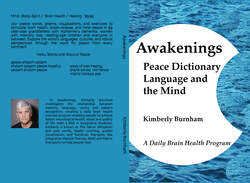 Look Inside on Amazon Look Inside on Amazon
Now Available: AwakeningsPlease share and write a review on Amazon.
Poet-In-Residence Position
I am looking for guest blog opportunities and a position as poet-in-residence. My current project is writing dictionary poems using words in different languages for the English word "peace." You can read some of my poems on Poemhunter . As poet-in-residence I would write poems on different words in different languages and broadcast them throughout the social media blogosphere. Each poem would link back to your site where the word or language appeared. I would expect some sort of stipend and a six month to one year placement. Please contact me for details if your organization is interested in having a poet-in-residence to help get your message out. Nervewhisperer@gmial.com Buy the print or eBook, review Awakenings then contact Kimberly for a free 20 minute brain health consultation. Email or Phone
(Regular rates $120 per hour or 10 sessions for $650.) (Integrative Medicine)
|

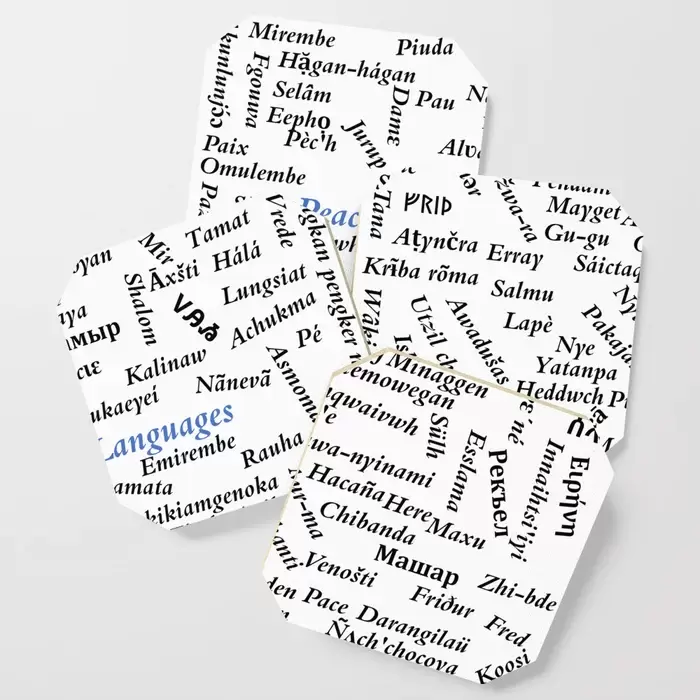




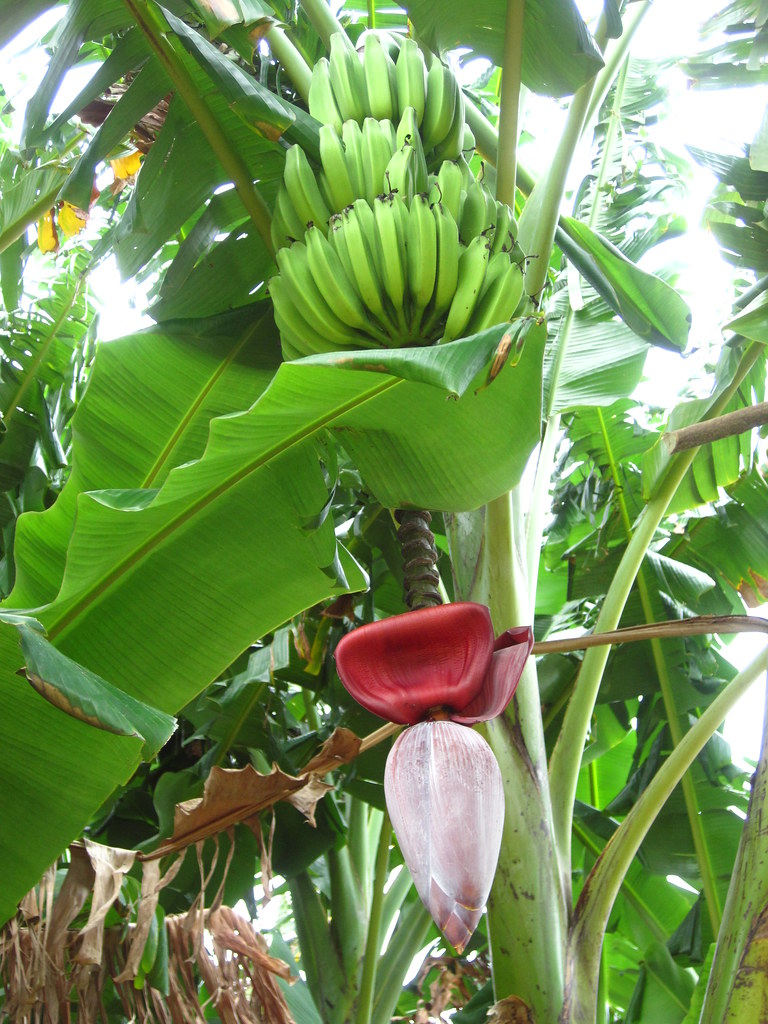

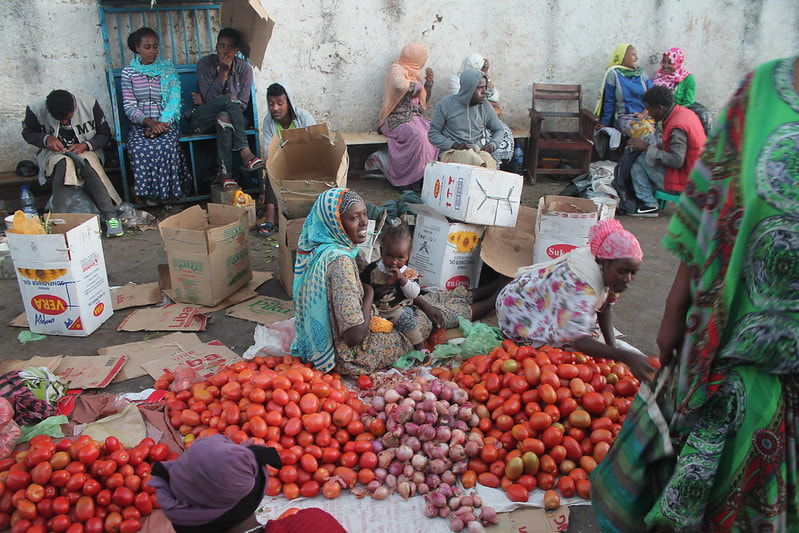
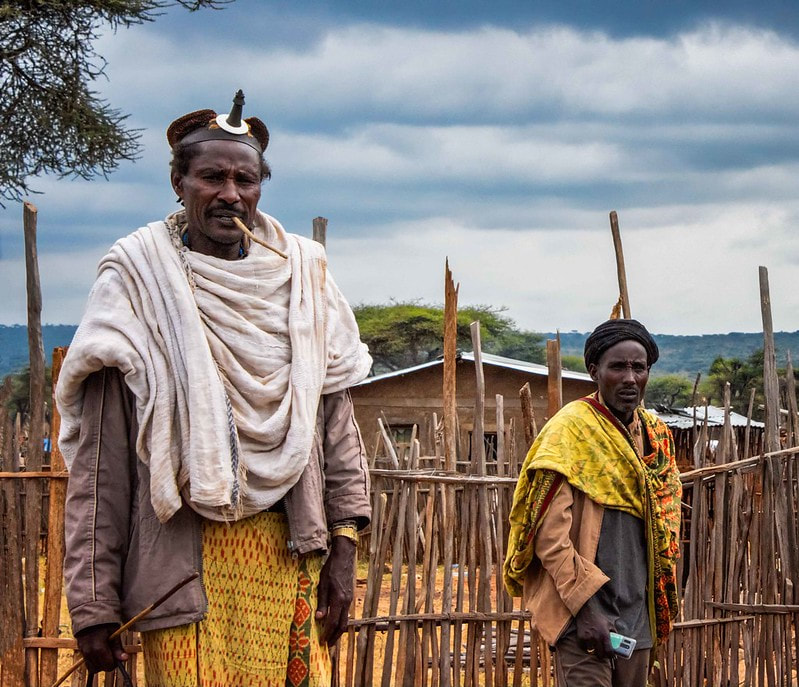
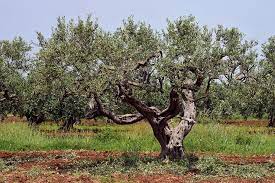
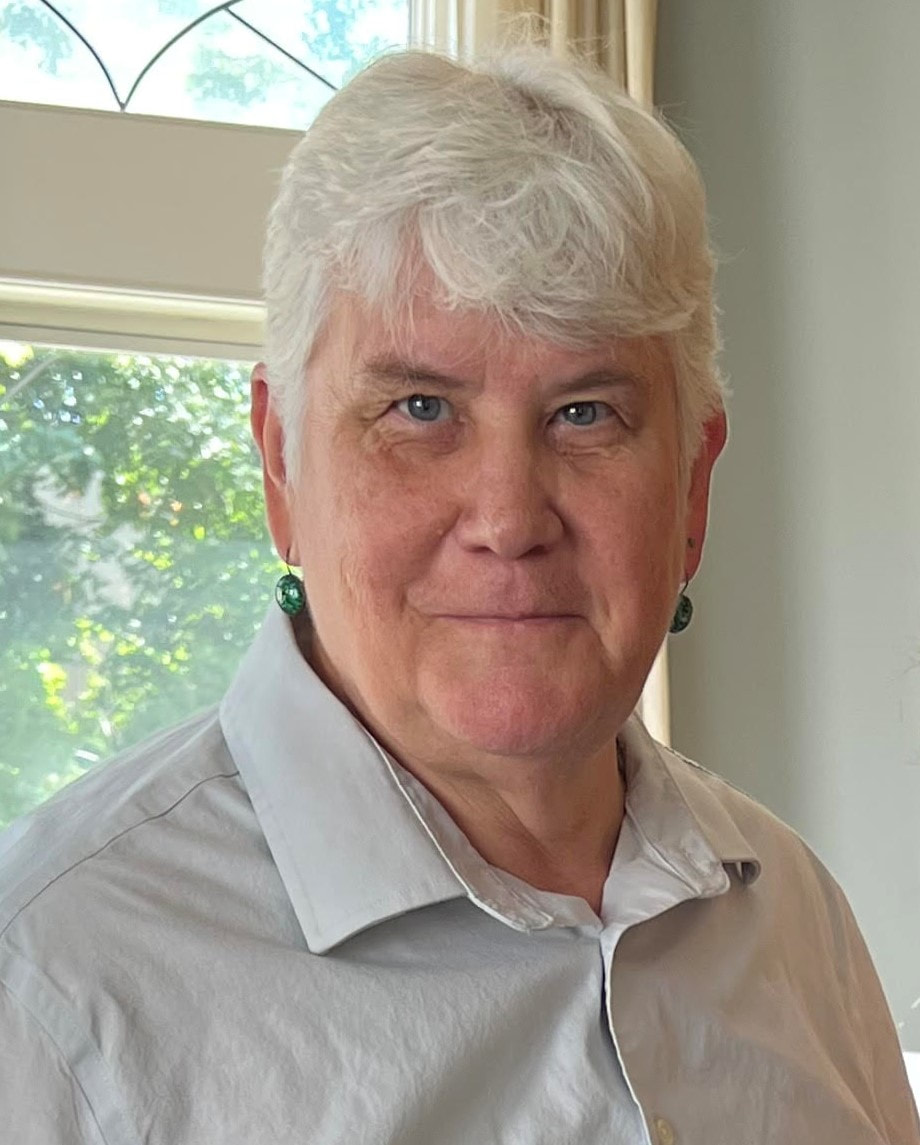
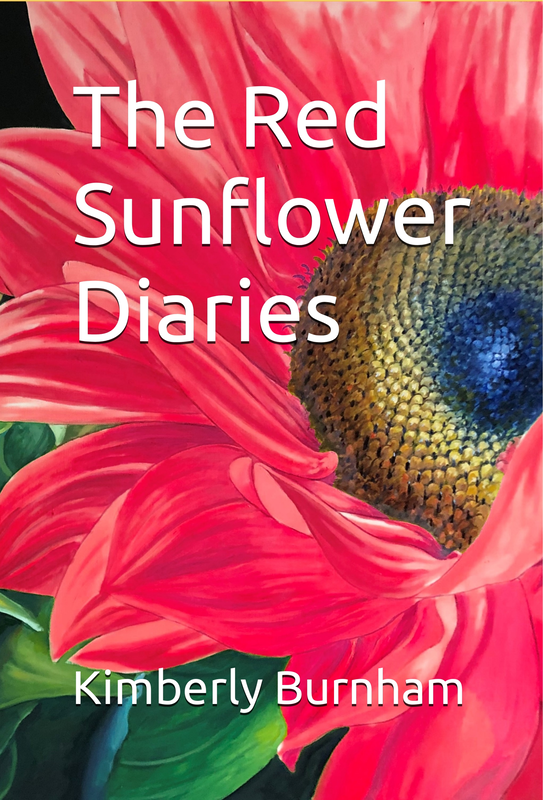



 RSS Feed
RSS Feed
